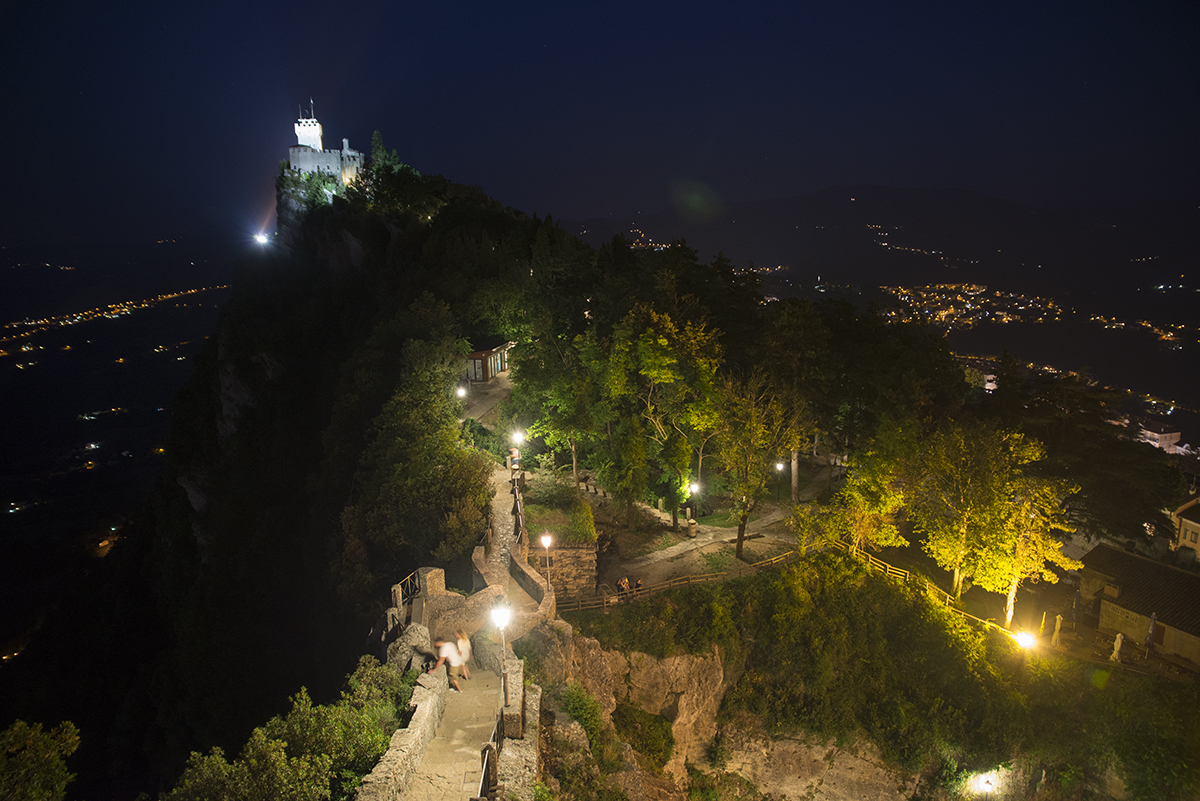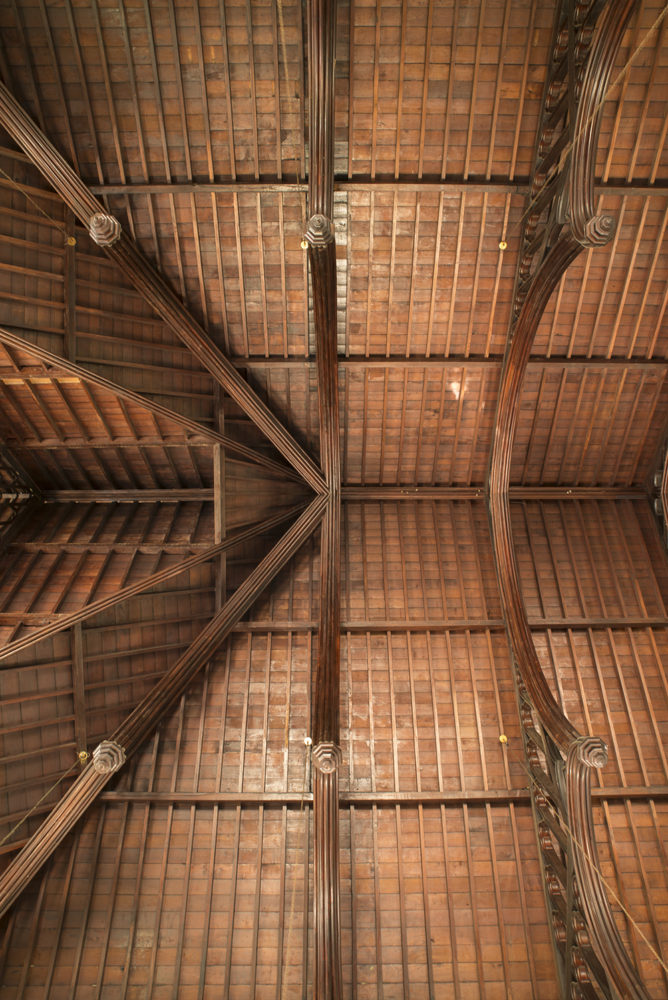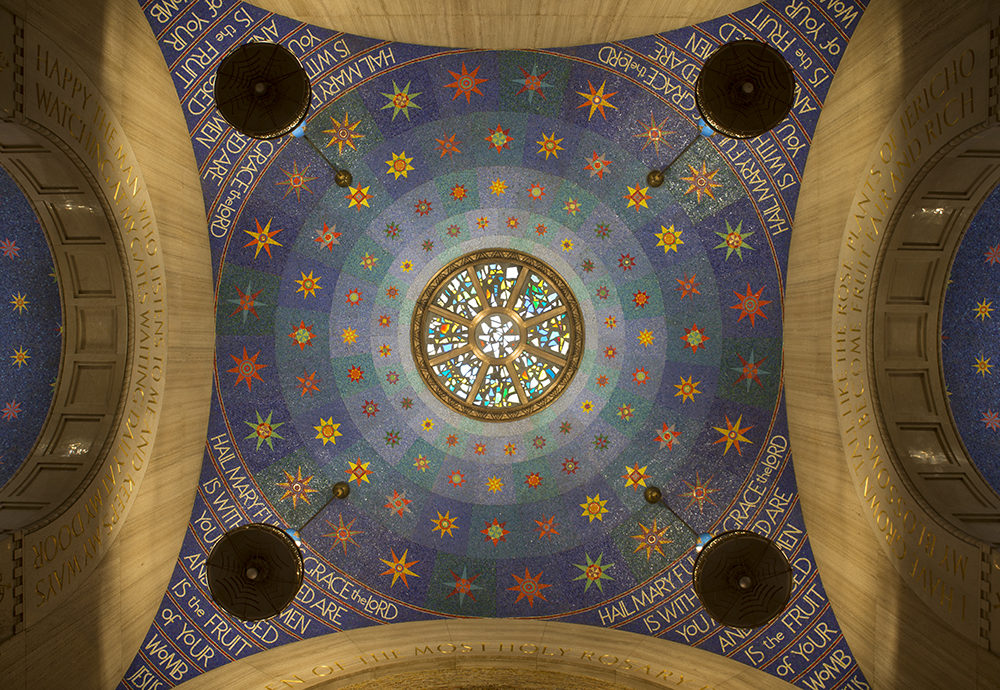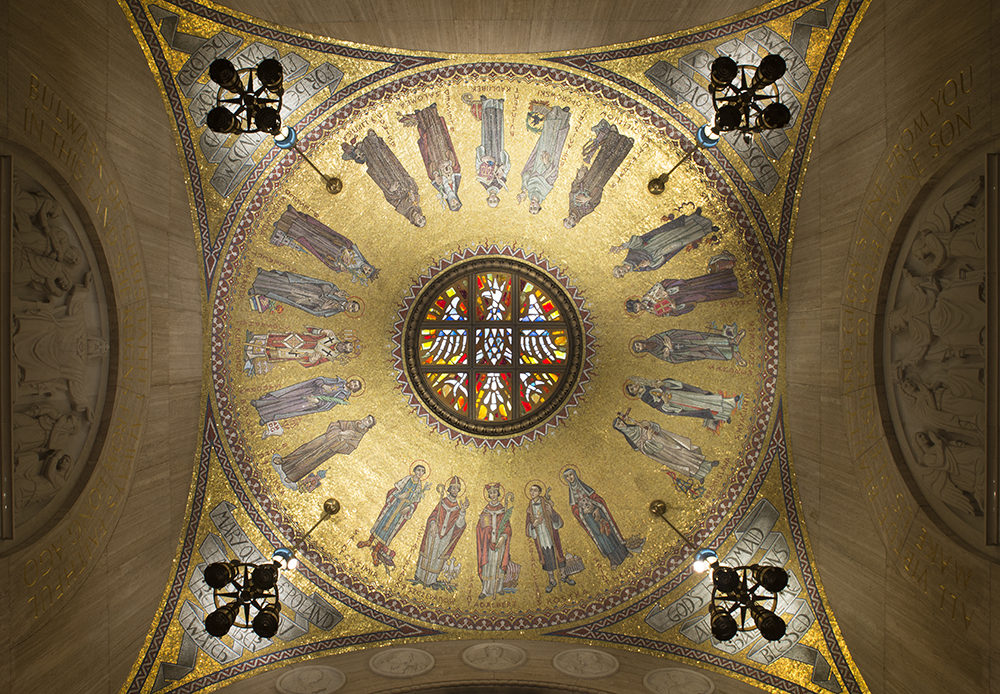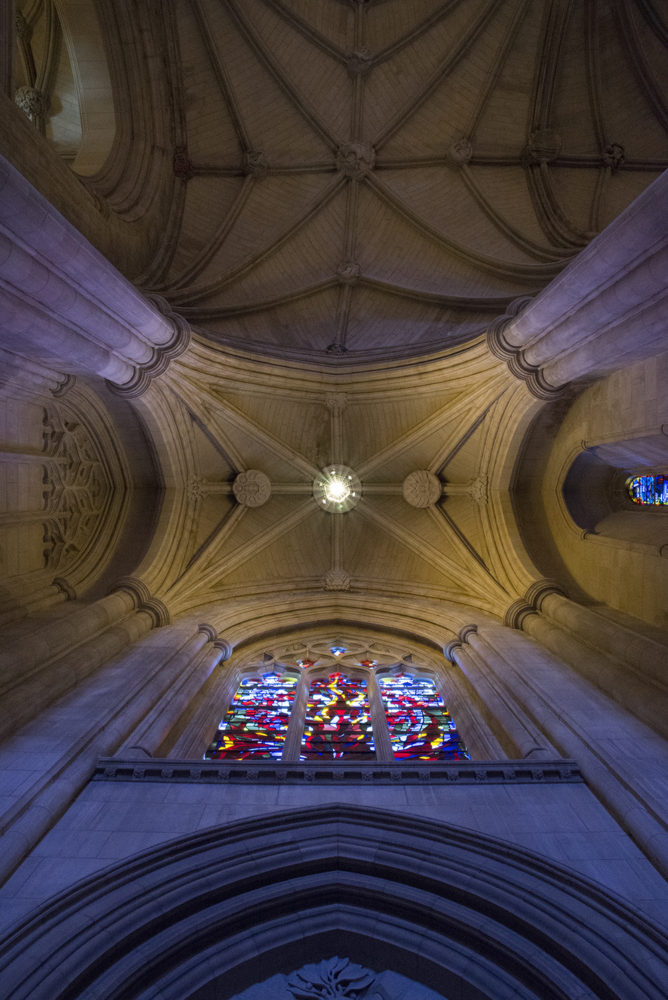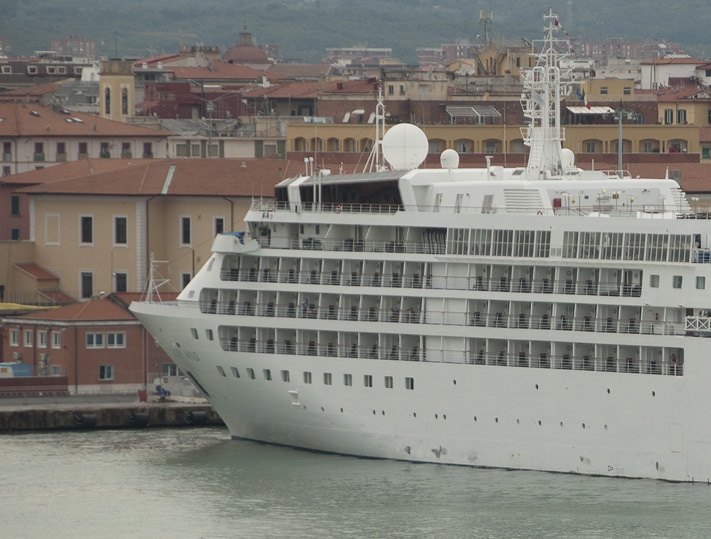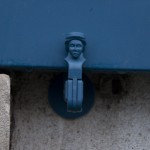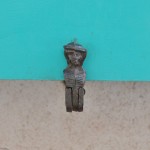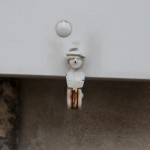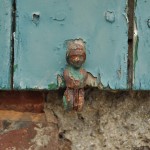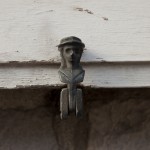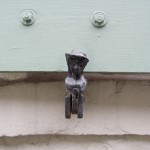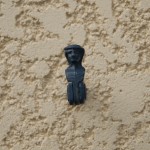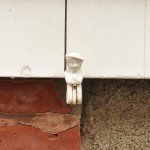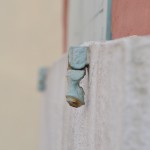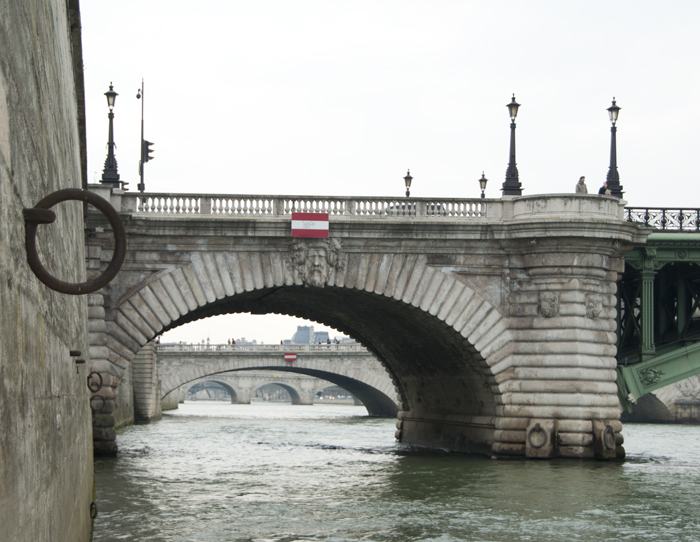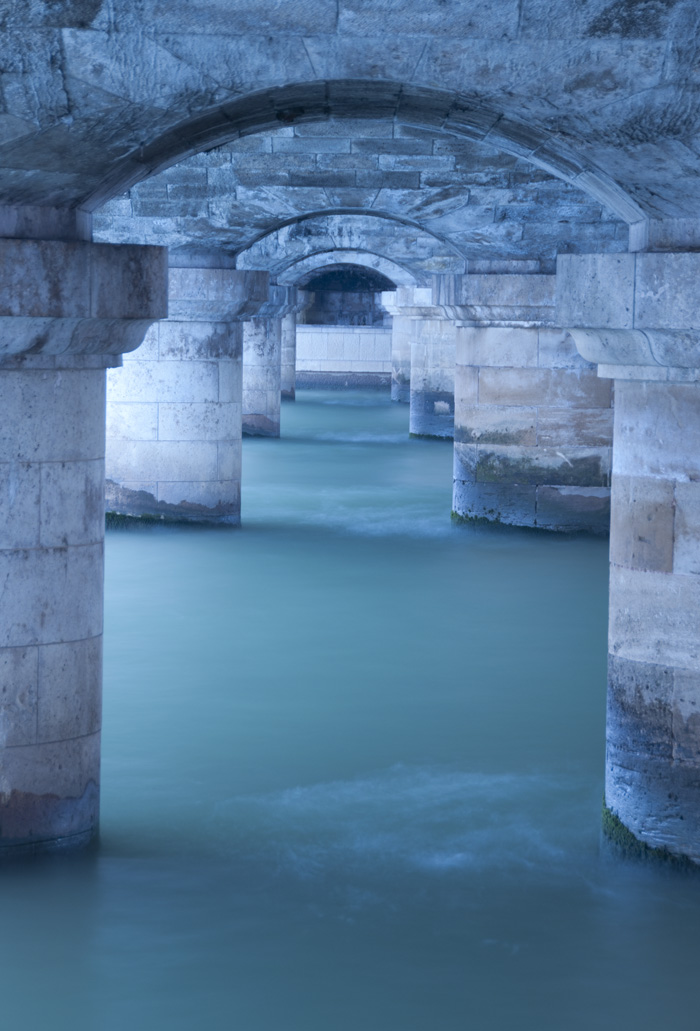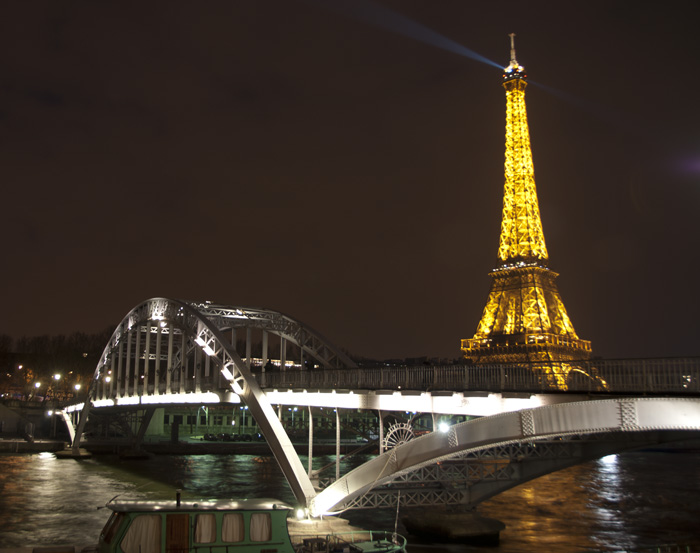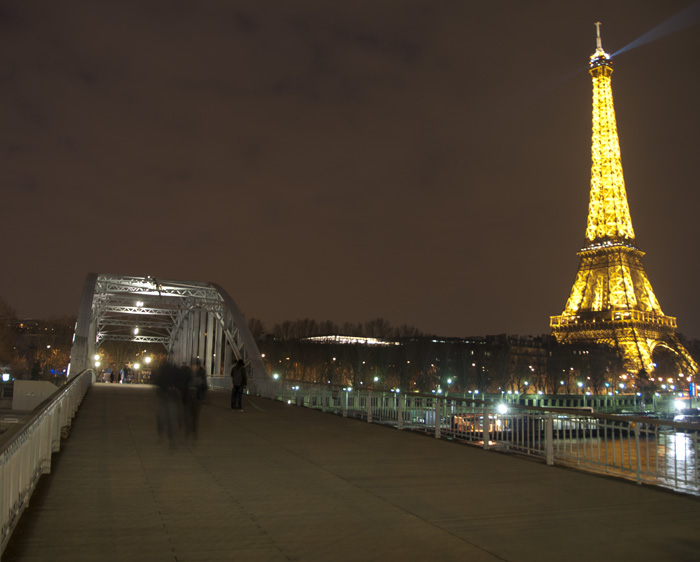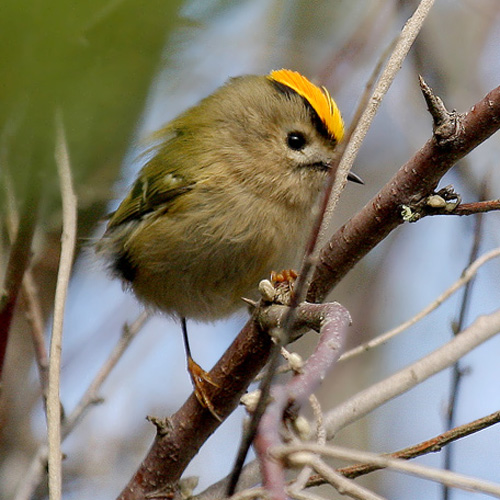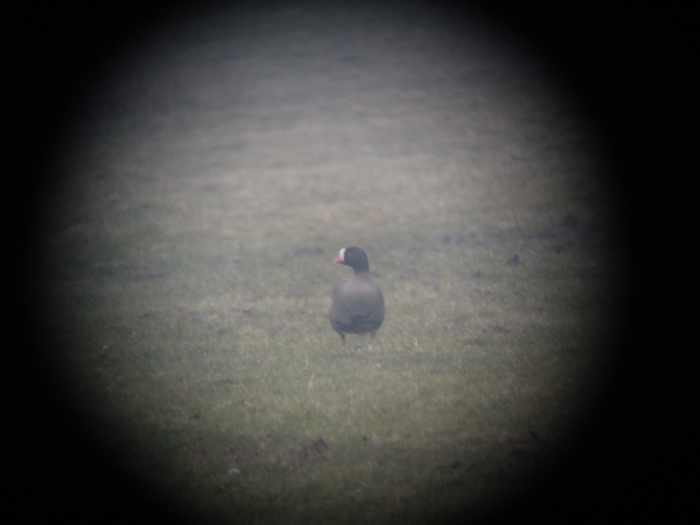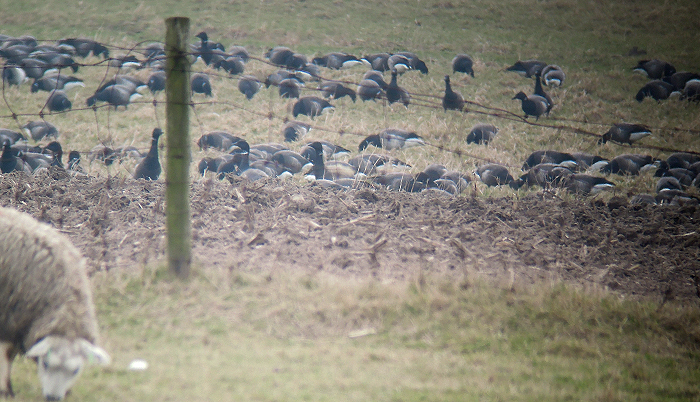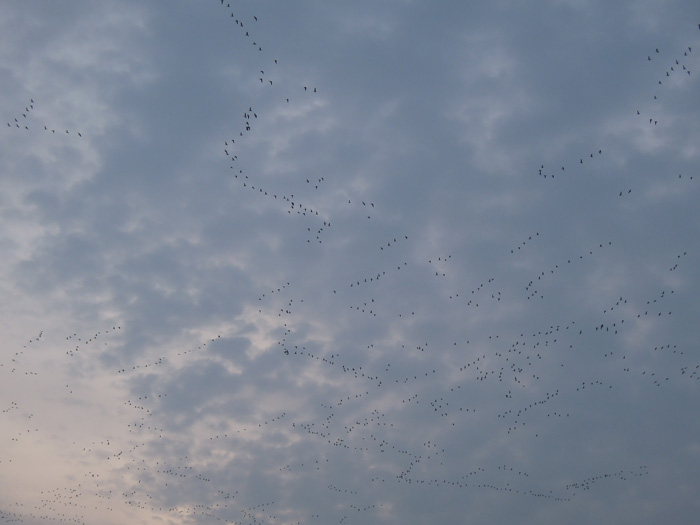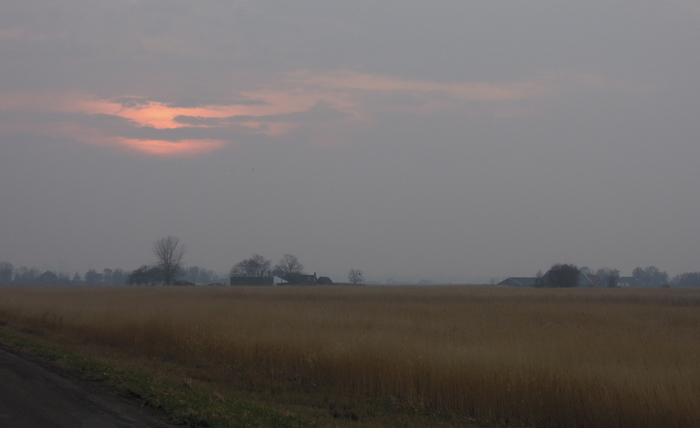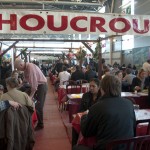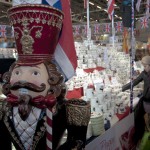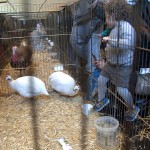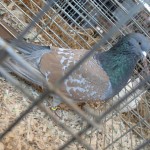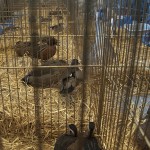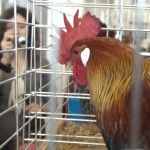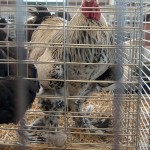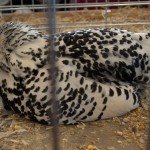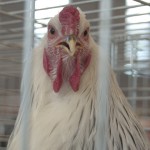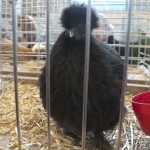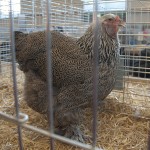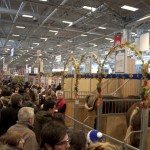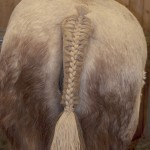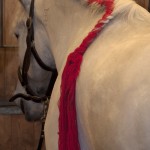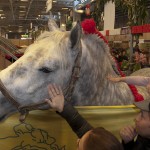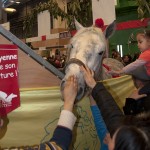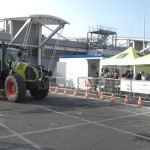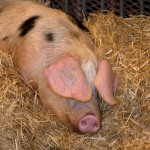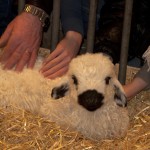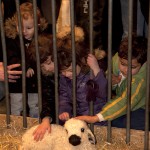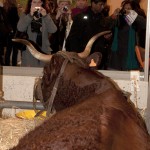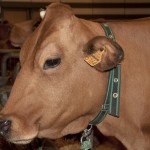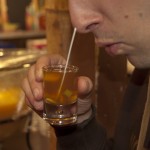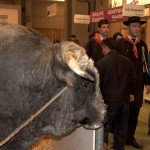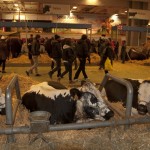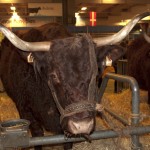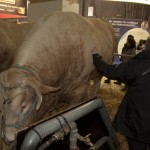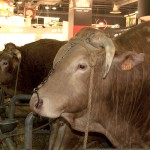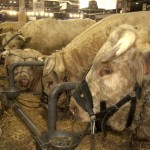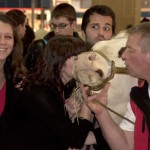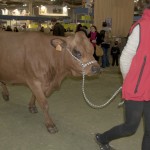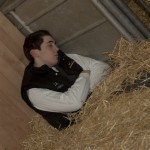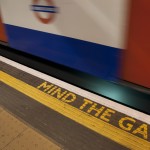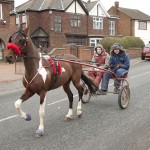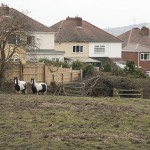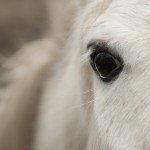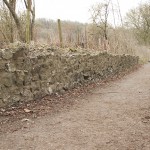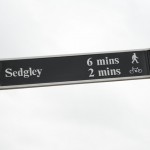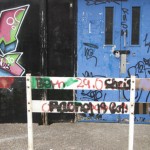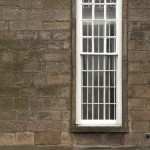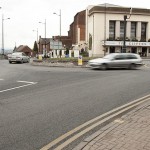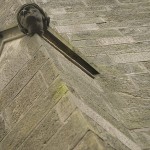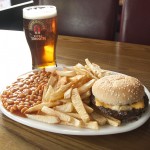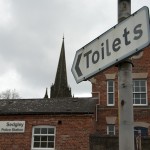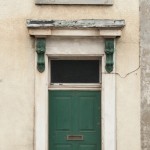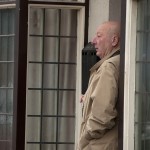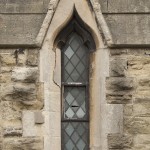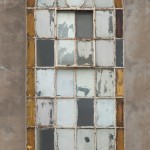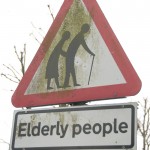Reverse Culture Shock: Paris
“The thrill of take off: the burn of reentry.”
Or it could be less of a burn: a mild irritation, perhaps. But if you’ve returned from overseas back to your place of birth after enough time to settle into a daily routine in a foreign country, chances are you’ve experienced reverse culture shock.
What was normal back home before our departure now stands in contrast. That cup of coffee just isn’t the same when you’re not on the edge of a bustling Italian piazza. You may now have to pump your own gas again, not like in Japan where you are fastidiously greeted at the gas station by bowing attendants. Gone too are the washcloths they cheerfully give you to wipe down the dashboard. Or you may complain about the sorry state of public transportation.
Either way, these fruits of cultural passage cause you to pause and reflect on the previously invisible strings that have guided your life to date. Some of it may be good, and some bad.
As Kristi and I integrated back to Seattle after nearly a year in Paris, there were certainly a couple cultural frictions that slapped us back to reality.
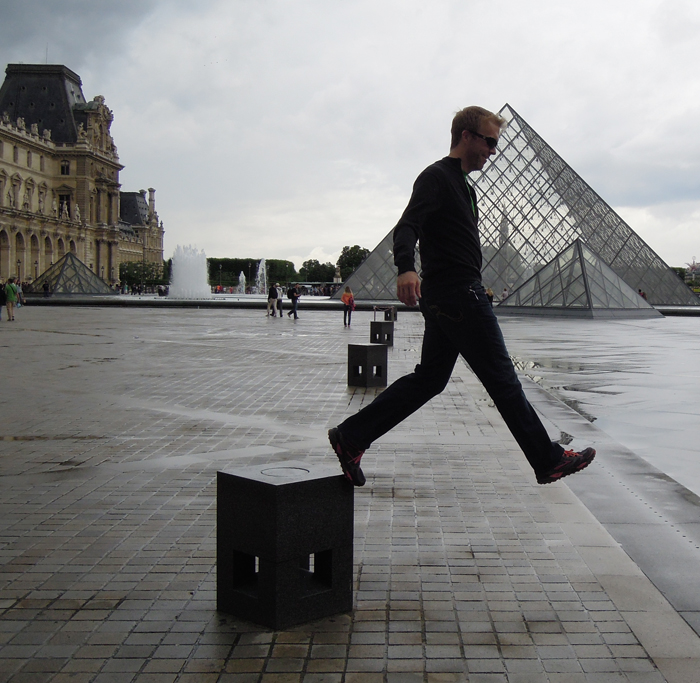
Driving. Everywhere.
If you live in any urban center in Europe, you spend a lot of time walking. If you want groceries, you walk. If you want to go to the local bar, you walk. Gotta go a bit further than your legs can take you? Take a bike, jump on a bus or subway, and then walk. After ten months without a car, I found myself a bit depressed when two errands in Seattle required driving in a triangle, five miles to a side. This relates to the states of public transportation (see next).
The state of public transportation.
Very few people drive in Paris; everyone takes advantage of the widespread Metro system. And, outside New York, practically no one in the United States considers buses or trains as a viable form of transportation.
“It takes too much time” or “it just isn’t safe” are frequent laments.
True, taking the bus does take more time than driving. But the same can be said about getting to and from nearly any location in Paris. Everyone takes the Metro so that’s the widely accepted time it takes to travel between locations. Metros don’t have to compete with cars to get people from Point A to Point B the fastest.
As for public transit in the U.S. not being the safest means of transportation … yeah, well, it’s hard to refute that when your first bus ride home involved a drunken disorderly, assault with a pantomimed weapon, verbal assault, and imported liquid contraband. On our return home from seeing my grandmother, no less.
Fighting resistance to wear scarves.
You better sit down for this one: Parisian men dress better than most Americans do. I had a tough time with the social faux pas of wearing shorts in summer, even when the temperature approached 100 degrees. A salesman almost created an international incident when he scolded me for daring to fight heat exhaustion by baring my legs on an especially hot and muggy afternoon.
But when the weather got a bit cold, the scarf was a sartorial bandwagon I jumped on with alacrity. As a man, I have few opportunities to accessorize and yes, they make me feel pretty. So I bought one. Then I bought eight more. Turns out that was the easy part—finding the appropriate social situation in which to wear them back in Seattle has proven to be a challenge.
Different types of milk.
At our local grocery store in Paris, I thankfully had access to rice milk as an alternative to my “lactose unpleasantness.” But when we returned to the cavernous halls of our American supermarket, I was surprised to find a load of new organisms that had apparently sprouted milk-producing teats: hemp, super grains, almonds, soy, oats…
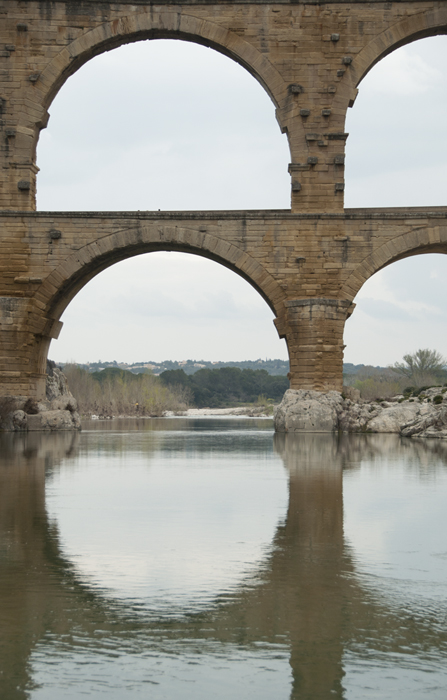
Talking about a trip to Provence … without sounding like a conceited dillweed.
If you are at a dinner party, and someone mentions something—like a favorite cheese or a recent road trip—and it reminds you of your recent experience abroad…
STOP.
Is your story about a recent weekend in the south of France going to put a cork in the conversation? First, look for the proverbial record player in the corner. If nothing is liable to come to a screeching halt, proceed carefully and, for the love of god, please restrict yourself to the American pronunciation of place names. You can easily suck the wind out of a room as you draw out the last syllable of Provence (proh-VAHN-s-s-s-s-s-s-s) and let it hang in the air like the bubbly applause of a freshly poured glass of Dom Perignon.
Oh, us? Yeah, we went there. I tell you about it the next time I see you.
Portion Sizes: Big, or for multiple people.
I lost weight in Europe despite already sporting a svelte (read: atrophied) physique before we left. Sure, walking everywhere helped. But having average food portion sizes no bigger than a human thumb certainly trimmed the waistline. I tried to reverse this trend with baguettes—copious in both quantity and girth—and calorically-augmented foods like Andoillette (pork intestine sausage), but to no avail. It’s a “losing” battle considering American portion sizes dwarf their European counterparts, 2-to-1 (minus Germany).
Not having to tip.
Aside from baguettes, food is generally more expensive in Paris—that is a fact. But you don’t tip in French restaurants. Take 20% off the top of the price of your French meal, and this price discrepancy starts to melt like the cheese on top of a croque monsieur. This relates to my next point.
Receiving decent service at restaurants.
If there was an advantage to paying waiters and waitresses pennies on the dollar (which I don’t support), it would be that tips help incentivize exemplary service. This was a welcome change when we sat down to our first meal on this side of the pond. Service in French restaurants is very good, even better when you consider that they have to endure two Americans vomiting out their normally beautiful language in fits and spurts. But the expediency with which American wait staff fill your water and meet your every need is unmatched.
That being said, when all you want to do is sit on a terrace and mull over your glass of Sancerre, it is nice to be removed from a food industry that is focused on flipping tables.
Walking into a store without being seen.
French courtesy dictates that as soon as you walk into a store, you announce your presence with an enthusiastic “bonjour,” and an “au revoir” as you leave. Sometimes, you just want to enter a store anonymously, especially when these are the only two phrases you can say. You’ll find this anonymity in most American stores where employees aren’t paid on commission.
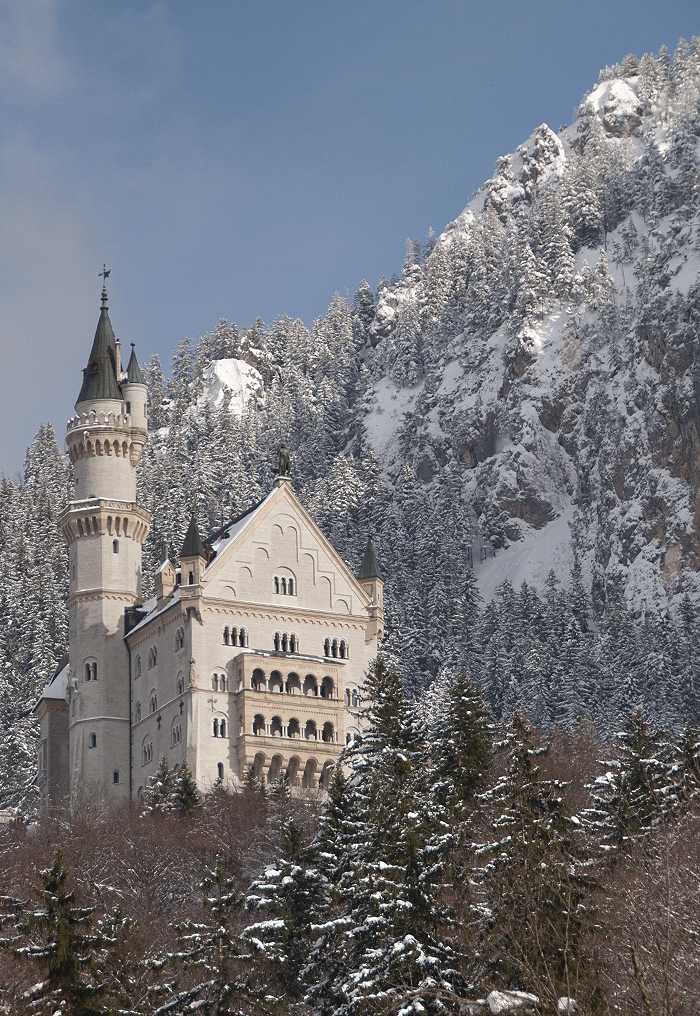
Weekend trips will never be the same.
Sorry, I just have to say it. Weekend trips just aren’t the same once you live in Europe where there are so many interesting locations so close to each other. Leavenworth, a.k.a. “Little Bavaria” of Washington State, unfortunately doesn’t hold a candle to, um, actual Bavaria. Suck it up. Make the most of it, and—for god’s sakes—don’t confess this fact to your friends. You’ll sound like a conceited dillweed again, and you have yet to tell them about your trip to Provence.
Driving slow in the fast lane.
Like the adrenaline rush of a sedan aggressively flashing their high beams behind you at 70mph? Drive in the far left lane in France. The left lane is the fast lane, and it is only to be used to pass slower traffic. It doesn’t matter if you are going over the speed limit, someone behind you will want to go faster. And chances are they are approaching, quickly. You better get out of the way.
After executing my first triangular errand run after my return to Seattle—half of which included Interstate 5—I found myself behind a blue minivan that had the audacity to drive the speed limit in the fast lane, with a finger hovering over my high beam lever.
A drought of draught.
The French are known for their wines but, if you like beer, expect only a handful of options, namely Kronenburg, Grimbergen, and Leffe. If you find a bar with a wider selection, you’ve found a special place; return often to reward their entrepreneurial spirit.
Needless to day, my eyes moistened like a cold tap handle when they scanned the plump beer lists on menus back in Seattle. Turns out, the lack of variety in Paris may have influenced my aforementioned weight loss.
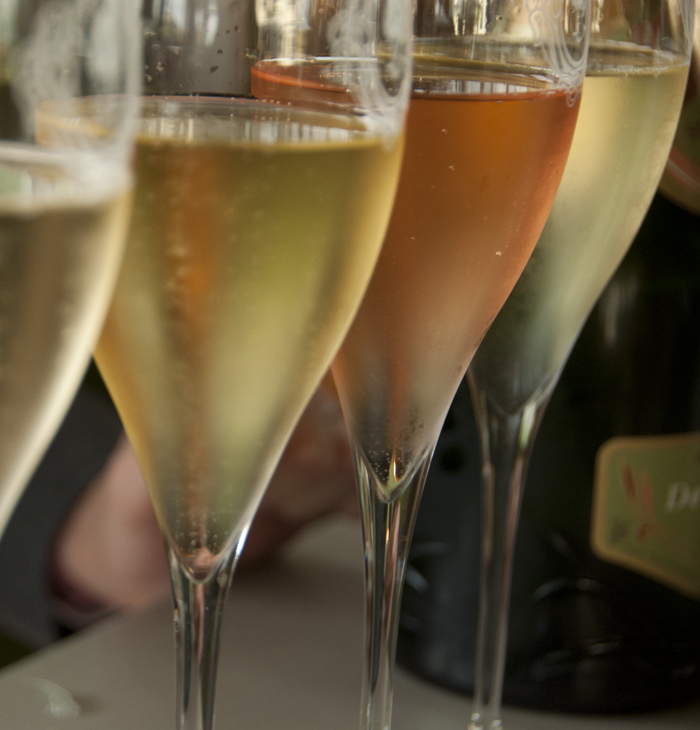
Ordering French wines without sounding like that frickin’ guy.
So they don’t have much beer in France, you better take advantage of the incredible selection of wines. Try as many as you can. Take notes. Find your favorites and even bring a couple bottles home to impress your friends. Remember the names of those favorite bottles when you next go out to dinner, but be prepared to sound like “that frickin’ couple” who just took a Frommer’s guide to Europe.
Then be prepared to spend more money on said bottle.
Then be sure to tell your waiter about your recent trip to Provenc-s-s-s-s-s-s-s…
Church Ceilings, Around the World
Grandiose, Ostentatious, Awe-inspriring, Humbling …
Such is the way that religious institutions—churches, synagogues, temples, mosques—are described around the world. Their designers created physical tributes to the deities that guided many lives throughout the centuries. Even today, in an age when our attention is torn from one flashing screen to another, these monuments still stop us in our tracks.
By setting my camera on its back pointing up, I tried to capture the diversity of these structures and the sense of the awe they all convey.
Sagrada Familia: Barcelona, Spain (1882 – current)
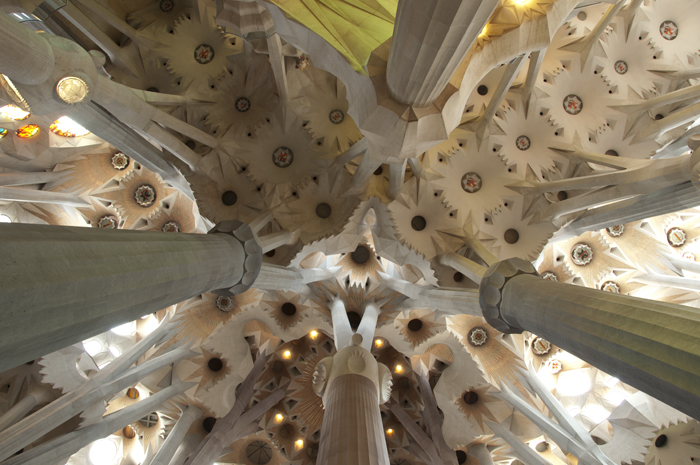
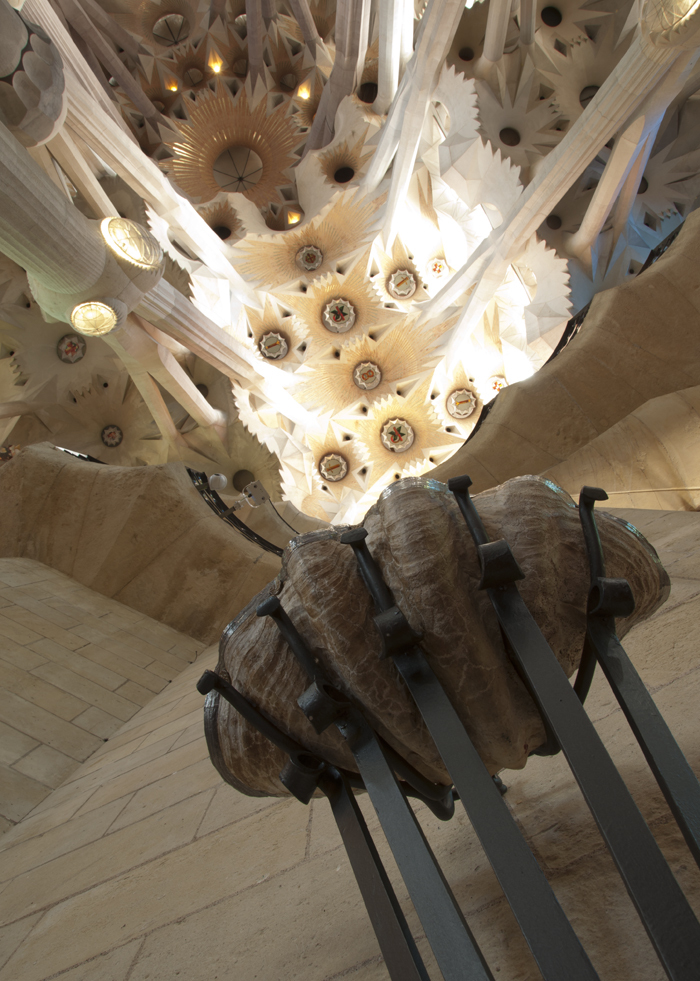
Duomo di Messina: Sicily, Italy (1197, 1908, 1947)
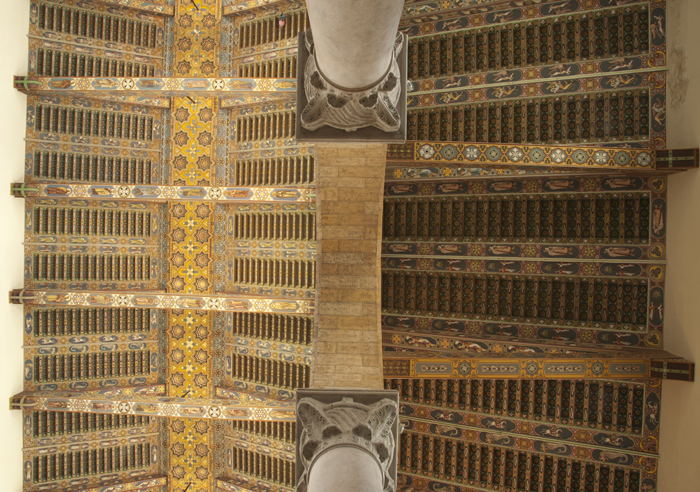
Pantheon: Paris, France (1790)
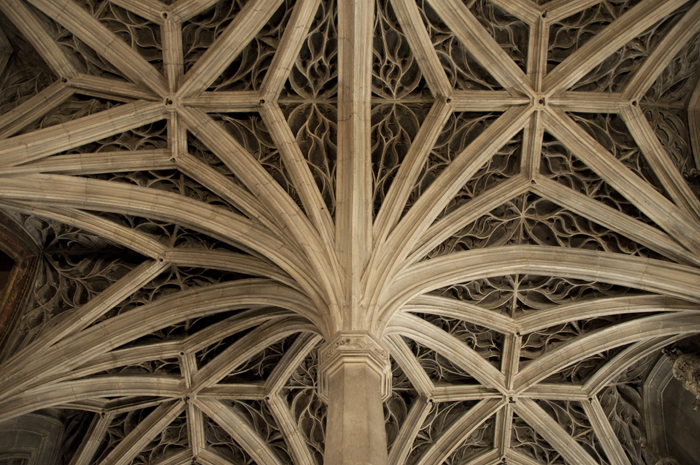
Galleria Umberto: Naples, Italy (1891)
Not a religious institution per se, but some people take shopping very seriously. Even on Sunday mornings.

The Pantheon: Rome, Italy (126AD)
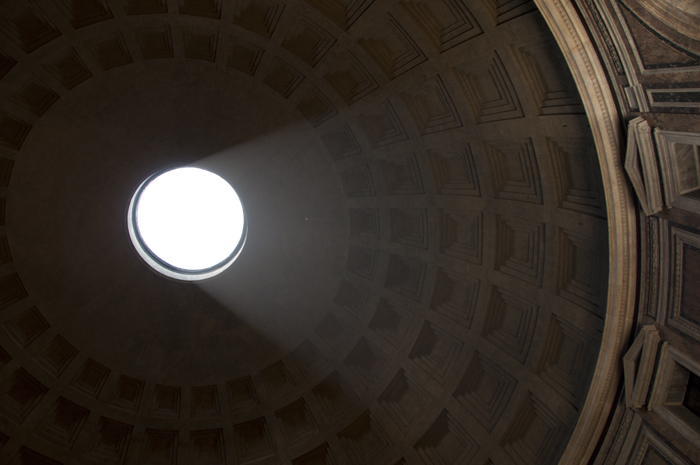
Cathedral of Saint Mary of the See: Sevilla, Spain (1507)

Rumbach Street Synagogue: Budapest, Hungary (1872)
In Hungarian: Rumbach utcai zsinagóga
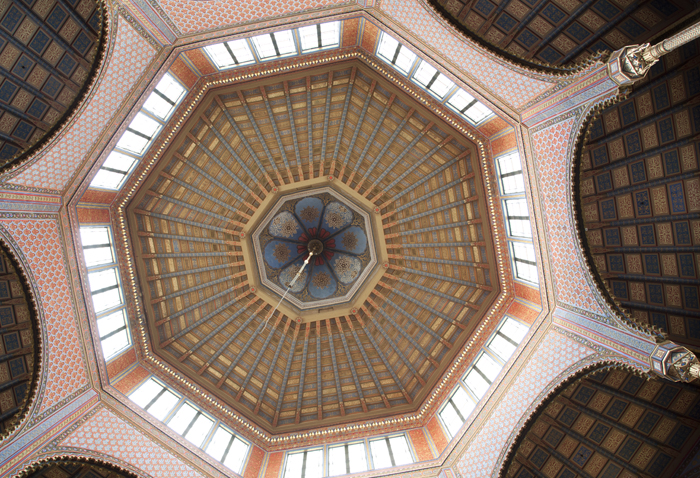
St Joseph T.M.L. Masjid Mosque: Port of Spain, Trinidad (1954)
Holy Trinity Cathedral: Port of Spain, Trinidad (1816)
Basilica of the National Shrine of the Immaculate Conception: Washington D.C., USA (1959)
Washington National Cathedral: Washington D.C., USA (1990)
Metropolitan Cathedral Catedral Metropolitana de Santiago: Santiago, Chile (1880)
The Non-Cruisers Guide to Cruising

Point A and Point B can both be exciting, but often times the best part of traveling between two points is the vehicle. And I’ve experienced a few: an elephant in Nepal; a camel in Morocco; a canoe in the Amazon; the back of a Peruvian truck, for three days, on a pad of burlap sacks laid atop stacks of crates loosely holding empty Coke bottles; severely underpowered Indian rickshaws belching blue smoke with each laughable burst of acceleration.
And a cruise ship.
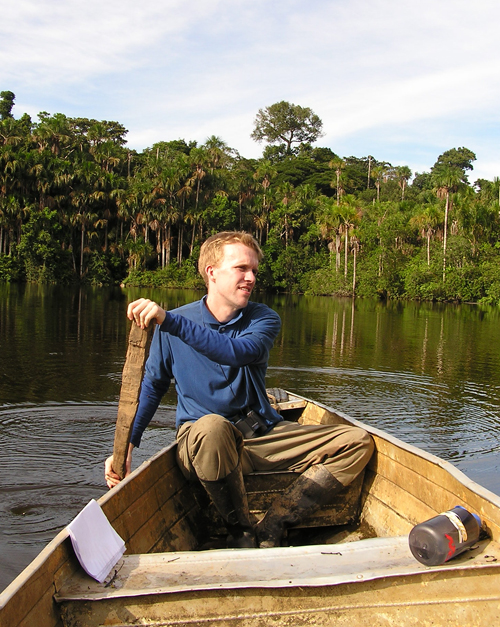
Sure, in my backpacking days, I shunned such forms of transit. A college course on tourism taught me that there are “mass tourists,” who travel en masse on popular itineraries, and “alternative tourists,” who seek the road less traveled. Despite differences in herding behavior, they are both striving for the same goal: authenticity. Whether it’s Chicago’s best deep dish pizza or Thailand’s most pristine beach, all tourists are looking to capture the most authentic experiences abroad, and, tacitly, to have theirs be the best.
I’ve done a majority of my travel as a backpacker and it’s hard to imagine such experiences are possible when one descends by the thousands to a port city for only a handful of hours.
Backpackers, who have felt they’ve earned their destination through the grit of a dusty road, refer to themselves nobly as “travelers,” and pejoratively label any large group as “tourists.” And cruisers, who travel the most carefree—and in the biggest groups—of any tourist are, in the eyes of the backpacker, the worst of this lot.
To inflame the difference, the scant possessions of the archetypal backpacker—a dog-eared travel guide, a tattered collection of international beer T-shirts, and a handful of dollars to spend every day—are antithetical to the cookie cutter excursions, unlimited food, and black-tie formal dinners that await cruisers on board.
Will there be a time in my life for a cruise? Sure, I thought: when I’m older. I tend to pace like a caged lion when I’m confined, so I’ll at least need to wait until both knees are replaced.
My timeline however was accelerated in 2006 when I was generously invited to the wedding ceremony of my future father-in-law. He and his bride-to-be go on frequent cruises so their venue was a special one: a Princess ship from Alaska to Vancouver, B.C.

As I packed my bags—using, for the first time, a rolling suitcase—I could feel the impending cultural clash breathing down my neck. I was in my mid-twenties, maintained a healthy diet, and just completed my first marathon, so the target audience of the cruise company I was not.
But when I woke up refreshed on the first morning and walked out on to our balcony to hear the deep, resonating sound of glaciers calving, much of my apprehension melted into Glacier Bay several stories below. Setting up my spotting scope to show Kristi her first pair of Horned Puffins was the meringue on the Baked Alaska (conveniently available downstairs in the dessert buffet).
The most important part of this cruise was to be with family, but I found several ways to pay respect to my backpacking history without sticking out like an unused lounge chair on the top deck. Following my experiences on now three cruises—one in the Mediterranean and another on the Pacific coast—I’ve assembled some tips in my “Non-cruisers Guide to Cruising.”
Find the unbeaten path
Every cruise company will push a long menu of shore excursions at every port. They are a great and easy way to capture the quintessential experience of a particular location—cooking class in Tuscany, glacier walk in Alaska—but they are expensive, and attended by the busload. If you still have your traveling wits about you, there are plenty of alternatives—it just requires thinking outside the box.
 On our Alaskan cruise in 2006, Kristi and I learned of a trailhead that was near the dock in the port town of Ketchikan. Found within minutes, the beautiful trail followed a moss-encrusted stream to a lake rimmed by mature evergreen forest. Despite the fact that two cruise ships had unloaded nearly ten thousand people at this base of this trail, we only ran into two other hikers. It was a special experience and, best of all, it was free.
On our Alaskan cruise in 2006, Kristi and I learned of a trailhead that was near the dock in the port town of Ketchikan. Found within minutes, the beautiful trail followed a moss-encrusted stream to a lake rimmed by mature evergreen forest. Despite the fact that two cruise ships had unloaded nearly ten thousand people at this base of this trail, we only ran into two other hikers. It was a special experience and, best of all, it was free.
Look at your itinerary and purchase the appropriate guidebooks, or search for reputable travel apps. My mother-in-law downloaded Rick Steves’ “Mediterranean Cruise Ports,” which gave detailed instructions on how to get from the mostly unassuming port towns to the main attractions. For example, Carnival Cruises had a “Rome on Your Own” tour that provided a private train car from the port city of Civitavecchia to Rome for $99 per person. With the help of the Rick Steve’s app, we were able to follow the exact same itinerary for $20. Sure, you run the risk of missing the boat—if you are late and not on an official excursion, the ship will leave without you—but who said travel should always be easy?
Get to know the employees. Learn how to say ‘Thank You.’
 The staff on cruise ships represent many, mostly developing, nations around the world: from Croatia to Indonesia, Peru to Romania. Every staff member wears their nationality at the bottom of their name-tag. The service on cruise ships is exemplary; you won’t be able to walk down a hallway without being eagerly greeted with a thickly accented “Hello” or “Good Morning.” Everyone is fluent in English but take a moment to ask them how to say “hello” and “thank you” in their own language. I startled my bar tender one evening when I thanked him in Romanian (“moo-soo-mesk”), a phrase I’d picked up from our waiter the previous night. What resulted was an in-depth and genuine conversation about when I should travel to Romania, and what places shouldn’t be missed. If you’ve been to their country, don’t be shy about sharing your experiences: they will be delighted.
The staff on cruise ships represent many, mostly developing, nations around the world: from Croatia to Indonesia, Peru to Romania. Every staff member wears their nationality at the bottom of their name-tag. The service on cruise ships is exemplary; you won’t be able to walk down a hallway without being eagerly greeted with a thickly accented “Hello” or “Good Morning.” Everyone is fluent in English but take a moment to ask them how to say “hello” and “thank you” in their own language. I startled my bar tender one evening when I thanked him in Romanian (“moo-soo-mesk”), a phrase I’d picked up from our waiter the previous night. What resulted was an in-depth and genuine conversation about when I should travel to Romania, and what places shouldn’t be missed. If you’ve been to their country, don’t be shy about sharing your experiences: they will be delighted.
Active? Stay so.
Most boats have state-of-the-art gyms. Don’t have a routine? Ask for a trainer to help set one up for you. But if you want to sign up for the weight loss seminar, do so early: it will fill up very quickly.
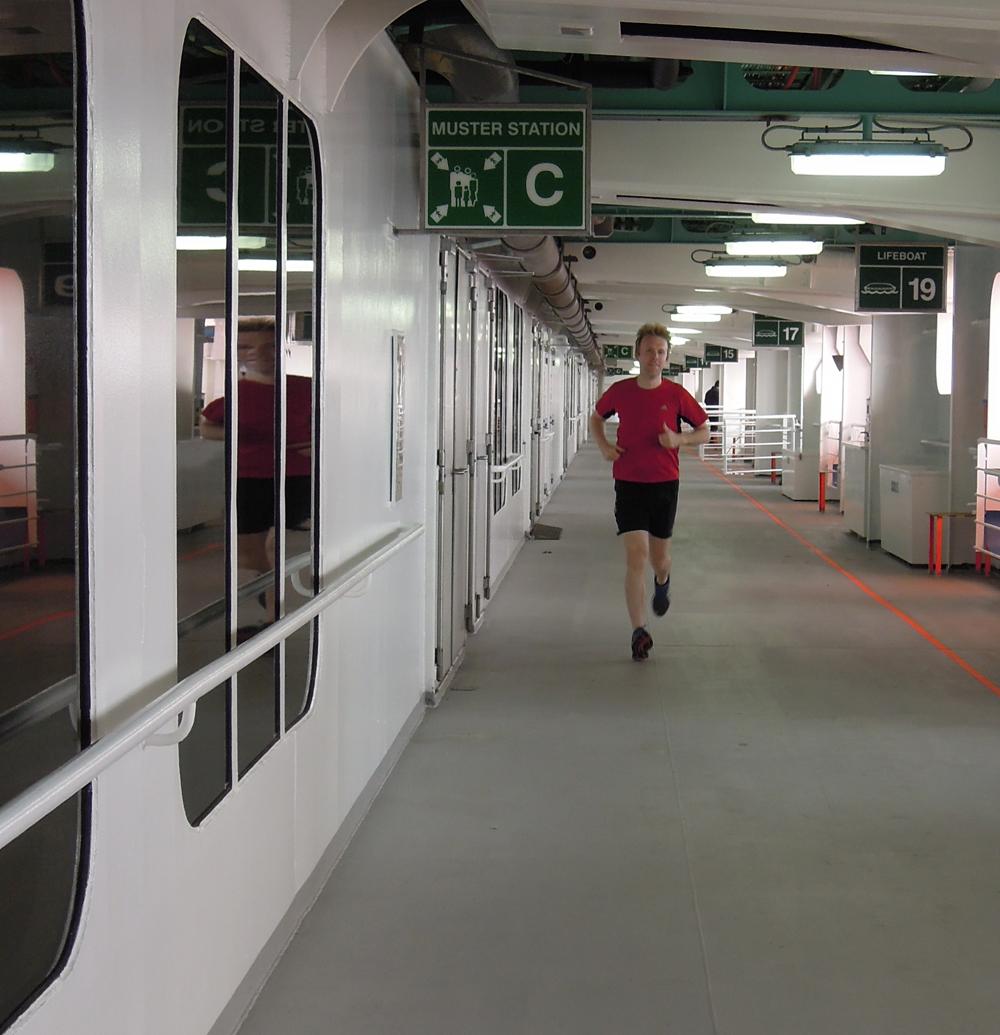 I’m an avid runner but I strongly dislike treadmills; I’ll run in driving snow before I subject myself to the tedium of the slowly advancing red numbers on an expensive hamster wheel. The Carnival Sunshine featured an outdoor running track on its 11th deck, ten laps of which equaled a mile. Too monotonous? Head for one of the lower decks to see which one extends the circumference of the ship, or at least comes close (some may be closed in the back). If you run for distance (and not time), ask one of the staff about the distance end-to-end. If they don’t know, walk the deck and count the number of strides. Now go upstairs to the treadmill and count how many strides it takes you to walk 0.1 miles. I found that one length of deck three on the Carnival Sunshine was 0.25 miles (and 0.5 miles when you turned around to return to your starting point).
I’m an avid runner but I strongly dislike treadmills; I’ll run in driving snow before I subject myself to the tedium of the slowly advancing red numbers on an expensive hamster wheel. The Carnival Sunshine featured an outdoor running track on its 11th deck, ten laps of which equaled a mile. Too monotonous? Head for one of the lower decks to see which one extends the circumference of the ship, or at least comes close (some may be closed in the back). If you run for distance (and not time), ask one of the staff about the distance end-to-end. If they don’t know, walk the deck and count the number of strides. Now go upstairs to the treadmill and count how many strides it takes you to walk 0.1 miles. I found that one length of deck three on the Carnival Sunshine was 0.25 miles (and 0.5 miles when you turned around to return to your starting point).
It may seem as if I’m just increasing the size of my treadmill, but I had deck three of the Carnival Sunshine to myself aside from the employees walking to and from work. As an added bonus, I got to see both humpback and killer whales on deck seven of Diamond Princess in Alaska, not scenery frequently experienced by runners.
Mission (Nearly) Impossible: Portion control.
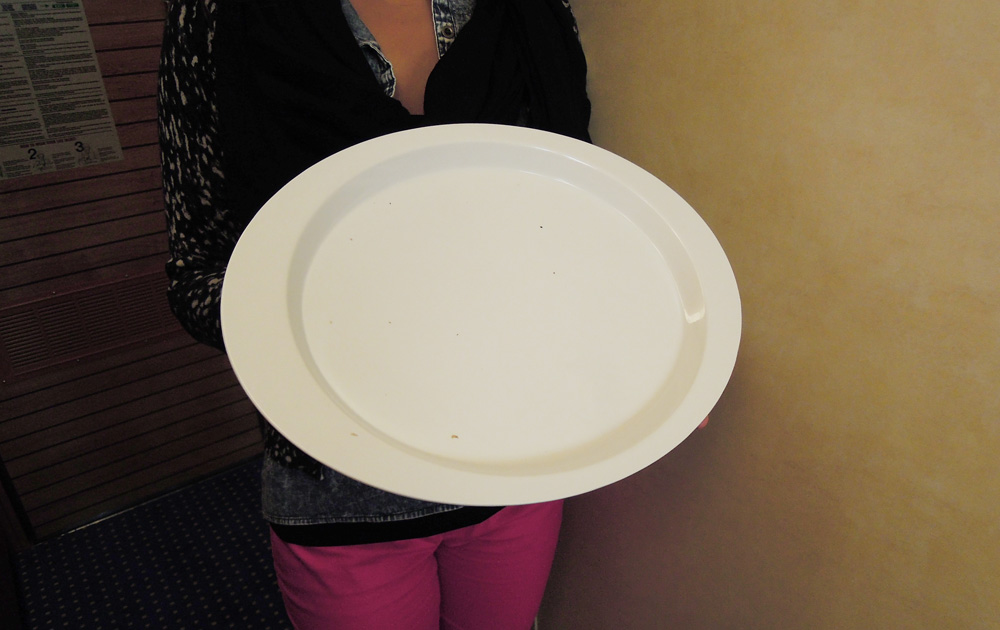 Cruise ships are notorious for unfettered access to an excess of food. Indeed, it’s hard to maintain a healthy diet when you have 24-hour access to pizza kitchens and soft serve ice cream machines, and the surface area of buffet plates rival the hubcap of a Kenworth. But if you do watch what you eat, there are healthy options at every turn.
Cruise ships are notorious for unfettered access to an excess of food. Indeed, it’s hard to maintain a healthy diet when you have 24-hour access to pizza kitchens and soft serve ice cream machines, and the surface area of buffet plates rival the hubcap of a Kenworth. But if you do watch what you eat, there are healthy options at every turn.
One note of caution: when you confide with the waiter that you are having trouble deciding between two different entrees, don’t be surprised if he just says “OK” and walks away. This delightful conundrum happened to me once and I wound up with both the steak and the lobster, plus all of the respective sides.
The alternative to portion control is to recognize that you’ll gain weight, and have a goddamned great time doing so.
Are you a birder? There are options for you.
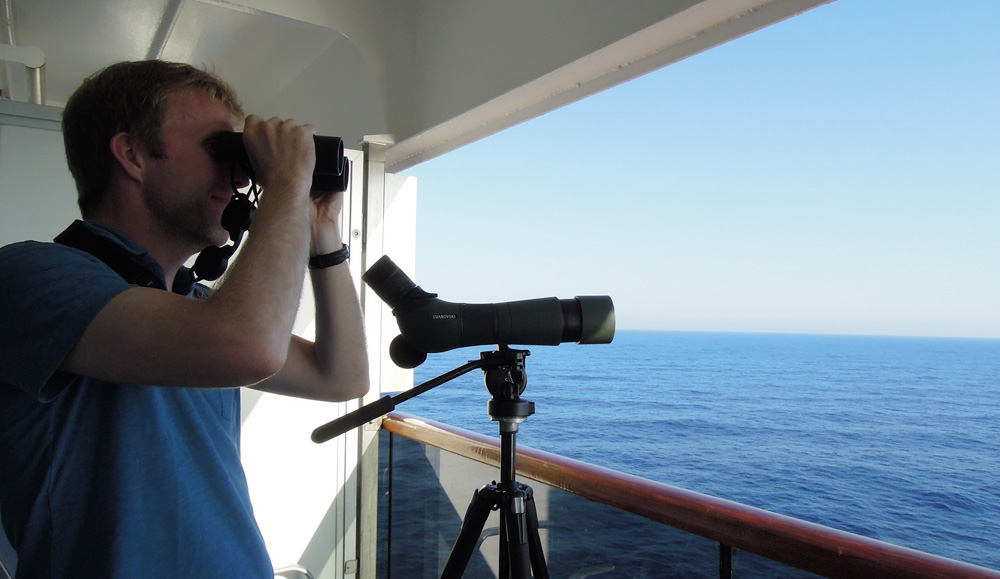 I’m an avid birder and no matter where I am, I always have one ear cocked upward. There are several families of birds that spend nearly their entire lives at sea: albatross, petrels, storm-petrels, collectively called “tubenoses.” A cruise is an unparalleled opportunity to see some of these denizens of the sea, depending on time and location. While you can’t stop to “chum” seabirds (the act of throwing out fish oil and suet to attract seabirds), cruise ships offer viewing platforms stable enough for a scope, and high enough to see birds in the troughs between waves.
I’m an avid birder and no matter where I am, I always have one ear cocked upward. There are several families of birds that spend nearly their entire lives at sea: albatross, petrels, storm-petrels, collectively called “tubenoses.” A cruise is an unparalleled opportunity to see some of these denizens of the sea, depending on time and location. While you can’t stop to “chum” seabirds (the act of throwing out fish oil and suet to attract seabirds), cruise ships offer viewing platforms stable enough for a scope, and high enough to see birds in the troughs between waves.
A repositioning cruise between Los Angeles and Vancouver (when cruise companies move their boats between the winter Mexican cruises and their summer Alaskan routes) provided opportunity to see Cook’s, Murphy’s, Hawaiian, and Mottled Petrel, Black-footed and Laysan Albatross, Cassin’s and Parakeet Auklets, and a handful of cetaceans included Baird’s Beaked Whale. We birded from sunrise to sunset during an exceptional year, but anything is possible under proper conditions. Less intense, and far less productive, early summer birding in the Mediterranean afforded views of Cory’s and Yelkouan Shearwaters, Common Dolphin, and a jumping Swordfish.
If you have a deck, use it. Common areas are perfectly fine, but be prepared to answer questions like “you looking for whales?” and, when you reply that you are looking for birds, to deal with the inexorable look of disappointment. One benefit of the common area, however, is the ease of moving from one side of the ship to the other to avoid the sun’s glare.
Unplug. Or pay the price.
Cruise ships have Wi-Fi, but the exorbitant prices will cause you to think twice before tweeting a picture of your breakfast (be sure to back up to get the entire plate in frame). Considering how digitally entrenched many of us are, a break will do you good. Don’t think it will be a problem? Wait until you need to think of something really important like, say, the name of Cam’s partner on ABC’s Modern Family. Go analog and think really hard. When that doesn’t work, ask people around you; it’ll be a great ice-breaker. If after several days neither you or the people around you still can’t think of the answer, spend $1.50 (for two minutes) to look it up (“Mitchell”? I totally knew that!). Question at what price search engines have enriched our lives.
Are you a non-cruiser who has been on a cruise? Got some tips for the rest of us? Please leave a comment.
French Woman Window Thingy
The 35 Bridges of Paris in an Evening
Three shapes emerge when you look at a map of Paris: a circle, a spiral, and a horseshoe. The peripherique is the 35km circular highway that defines the boundaries of “Paris proper.” The spiral is provided by the twenty arrondissements (or “neighborhoods”) of Paris that—in an effort to disorient tourists—begin in the middle and spiral out like a clockwise snail shell to the twentieth in the eastern portion of the city. About halfway down it’s 775km body, the Seine River snakes through the circular border of Paris, creating an oblong horseshoe within its circular border.
On a sunny Sunday in late March, I traced the horseshoe on foot to take pictures of each of the 35 bridges that span this renown river (37 if you include the peripherique—which I didn’t). It took six hours to walk the 14km horseshoe, following the Seine downriver, east to west. Unfortunately, by the time I arrived at the first bridge at 5:00pm, the sky produced the brightest, flattest light I’d ever seen; but I was already committed.
Once the sun went down, and the street lights turned on, the photo opportunities improved.
It was a fun study of the sheer diversity of Parisian bridges, from the oldest Pont Neuf (“new bridge,” ironically) built of stone in the 16th century, to the newest: a steel pedestrian span built in 2006.
Bridges of Paris – East to West
Pont = “Bridge” in French
Bridge 1 – Pont National
Completed in 1853 as a railway bridge and named Pont Napolean III (the famous Napolean’s nephew) until 1870. The peripherique bridge, and some of Paris’ nearest industry, loom in the background.
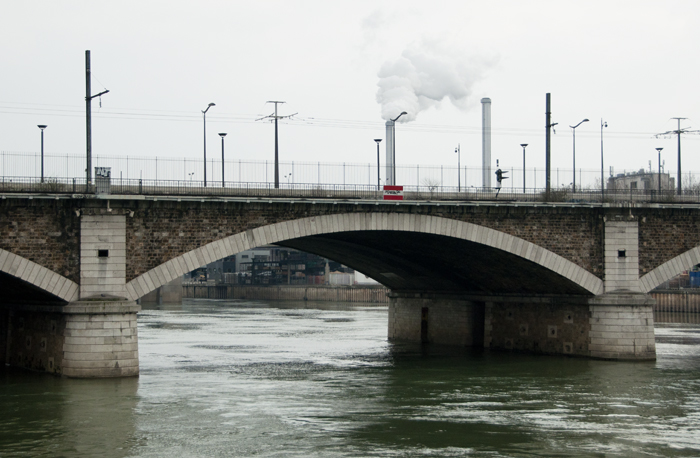
Bridge 2 – Pont de Tolbiac
This span was built in 1882 in a push to urbanize eastern Paris and, appropriately, it’s currently flanked by a cement company. It was hit by a downed British plane during World War II.
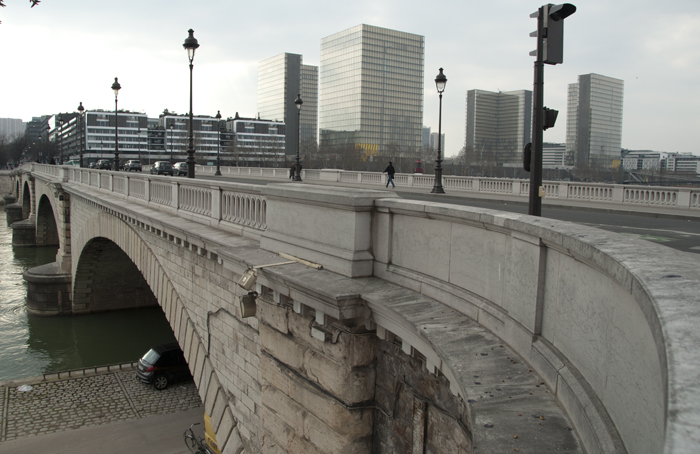
Bridge 3 – Passerelle Simone-de-Beauvoir
Erected in 2006, this passenger/cyclist only bridge was the 37th built in Paris. Named after the 20th century author who significantly influenced “second-wave feminism” through her 1949 book The Second Sex.
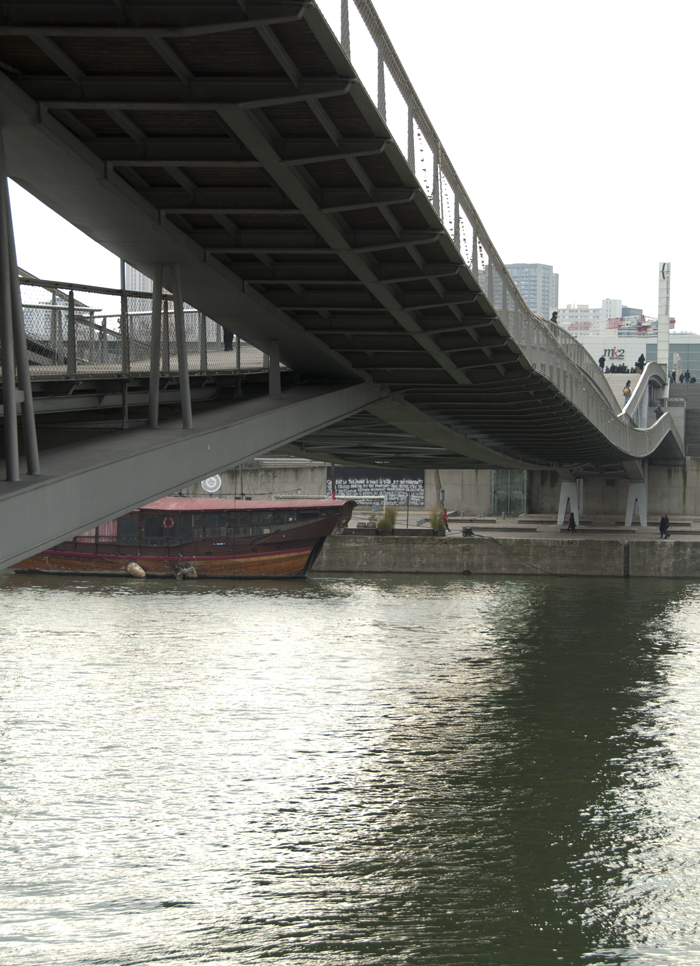
Bridge 4 – Pont de Bercy
A suspension bridge was built on this location in 1832 to replace a congested ferry service. This toll bridge was replaced in 1864 by a stone structure. It wouldn’t remain untouched for long: a second bridge was stacked on top for the Line 10 metro in 1904, and the width was doubled in 1989 to accommodate increased road traffic.
I was especially drawn to the bold graffiti on the abandoned building behind it.
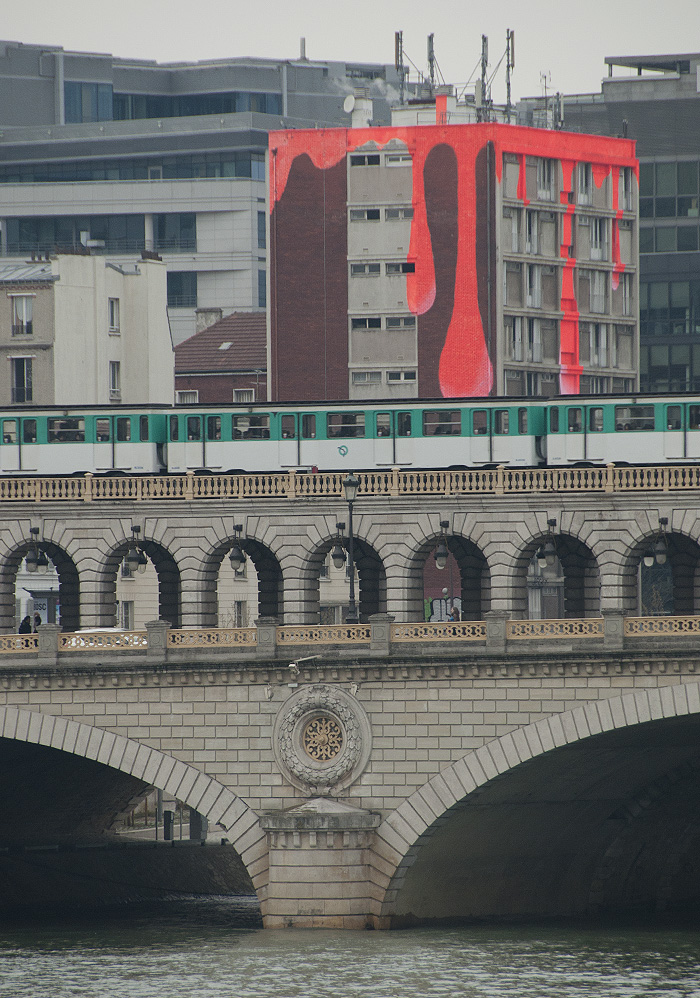
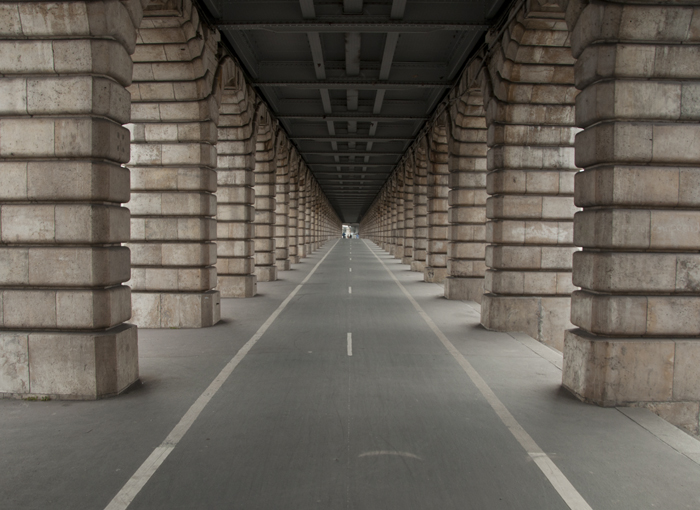
Bridge 5 – Pont Charles De Gaulle
Pont Charles de Gaulle was built in 1996 to relieve congestion on Pont d’Austerlitz to the north, the busiest bridge in Paris. It also created a direct connection between Gare d’Austerlitz and Gare de Lyon (pictured below), two popular train stations in southeastern Paris.
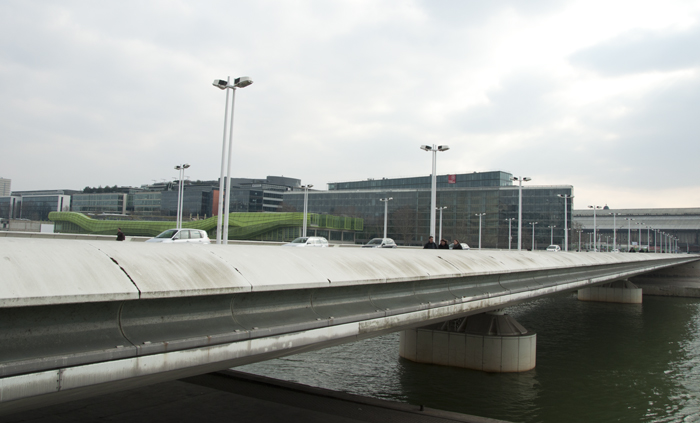

Bridge 6 – Viaduc d’Austerlitz
The Viaduc d’Austerlitz is used solely for the Line 5 metro. When it was completed in 1904, the 460ft bridge was the widest single span in Paris. It is currently second only to the 1996 Pont Charles-de-Gaulle immediately to the south.
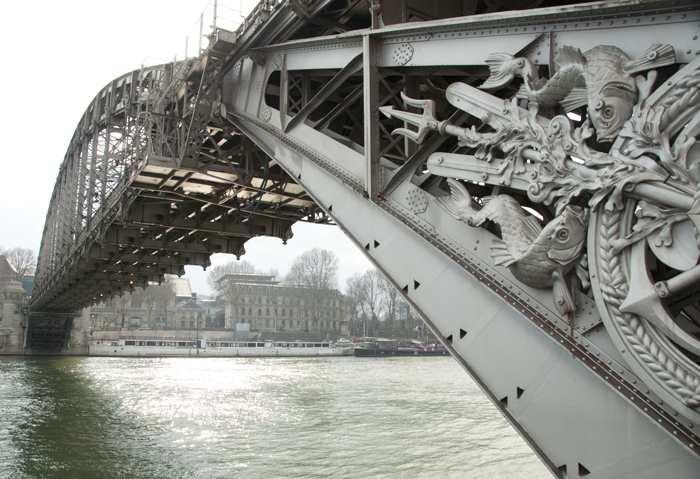
Bridge 7 – Pont d’Austerlitz
First constructed in 1805, this stone mason bridge was widened in 1854, and again in 1885. It was named after the Battle of Austerlitz of 1805 when, under one of his greatest victories, Napoleon defeated the imperial armies of both Russia and Austria in present day Czech Republic
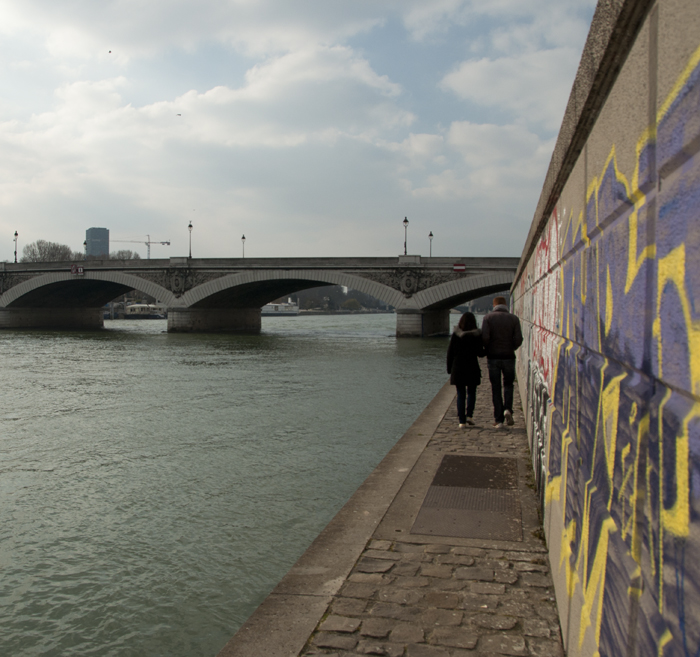
Bridge 8 – Pont de Sully
Composed of two spans that cross the tip of Ile Saint Louis, the first Pont de Sully was built as a pedestrian bridge in 1838. Construction costs were regained through tolls until 1872, when it succumbed to corrosion and collapsed. The current bridge was built in 1876.
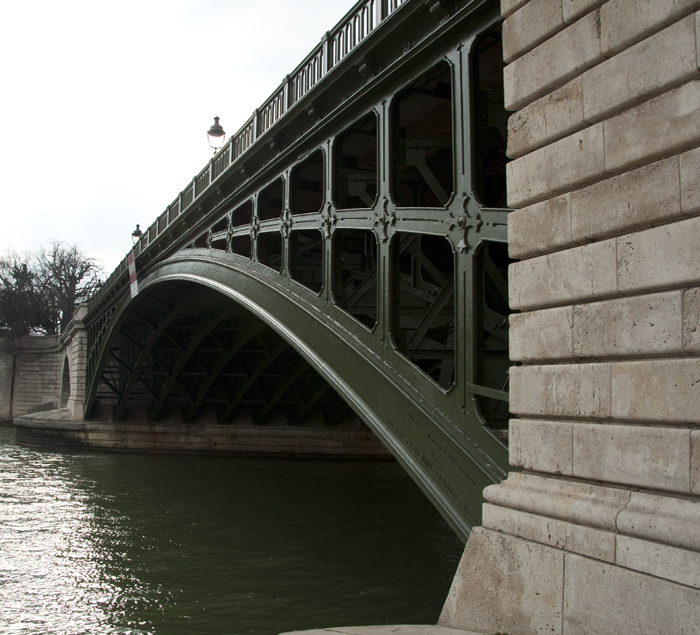
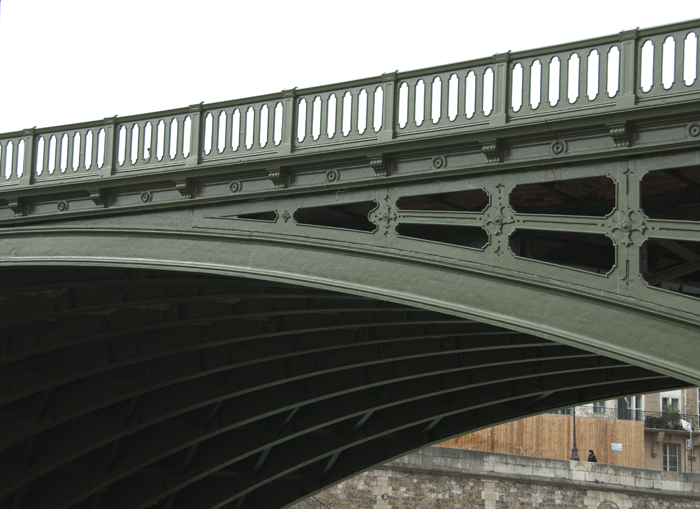
Bridge 9 – Pont de la Tournelle
Currently graced by a structure built in 1928, the site has hosted a bridge since the middle ages; unfortunately the original wood structure was destroyed in the flood of 1651 and its stone replacement was demolished in 1918.

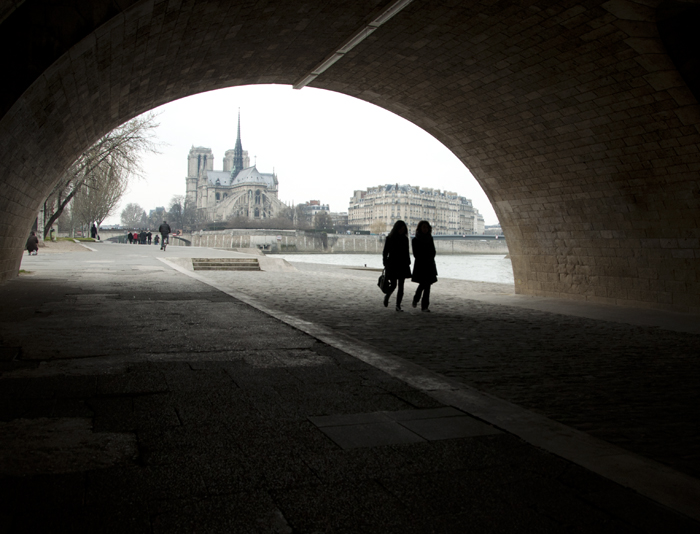
Under Pont de la Tournelle with Notre Dame in the background, downriver.
Bridge 10 – Pont Marie
Pont Marie was completed in 1635, after twenty years of construction, making it one of Paris’ oldest bridges. Fifty homes were erected on the bridge shortly after opening, despite appeals from the bridges designer (Christopher Marie). They were washed away during the flood of 1658. Each of the bridges five arches are unique.
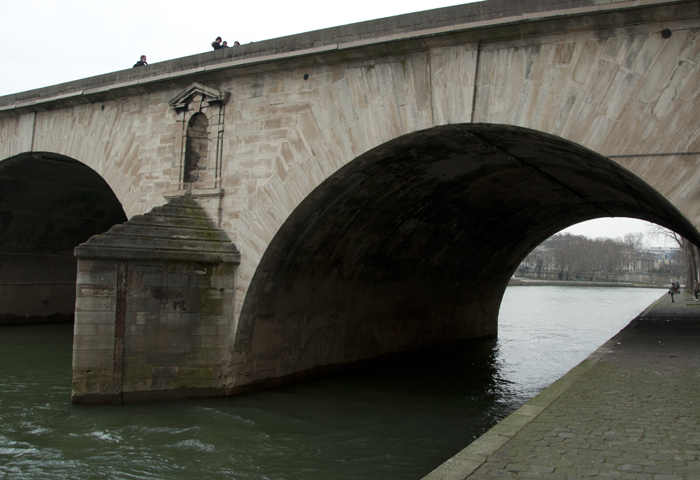
Bridge 11 – Pont Louis-Philippe
Its present form was built in 1860, but the site had hosted two bridges before it, the first of which was a nameless suspension bridge that was replaced in 1833.

Bridge 12 – Pont Saint-Louis
This current metal span dates to 1970, but the location—which connects Notre Dame with Ile Saint-Louis—has hosted seven iterations before it.

Bridge 13 – Pont de l’Archevêché
This bridge, the narrowest in Paris that allows cars, was built in 1828. Once Pont des Arts was cleared of its famous “love padlocks” in 2010, intrepid lovers fixed their heartfelt hardware on Pont de l’Archevêché, just a “locks throw” from Notre Dame.

Bridge 14 – Pont au Double
“Double” stands for the “double denier” coin pedestrians were charged to cross the first bridge, dating to 1634. Following a second bridge in 1847, the third and current version—made of cast iron—was built in 1883.
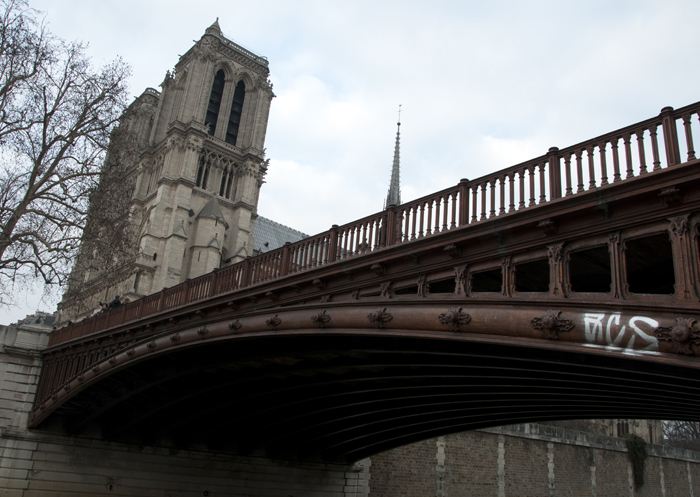
Bridge 15 – Pont d’Arcole
In 1854, this bridge was the first wrought-iron bridge to span the Seine (differentiated from the familiar cast iron by containing more fibrous content and less carbon). The Eiffel Tower was made from wrought iron thirty five years later. The bridge sagged suddenly in 1888 by 20cm; it was finally corrected in 1995. Hôtel de Ville can be seen in the background.
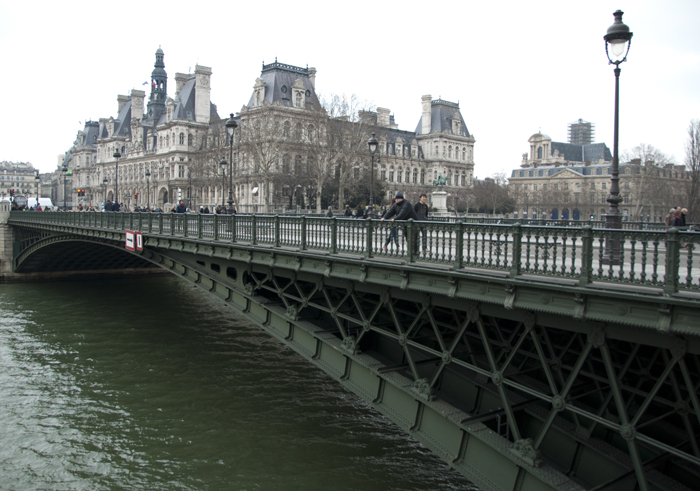
Bridge 16 – “Petit Pont”
Small, unassuming … and ephemeral, the Petit Pont has existed in its current form since 1853 but at least twenty-four predecessors have been washed away since the 9th century.
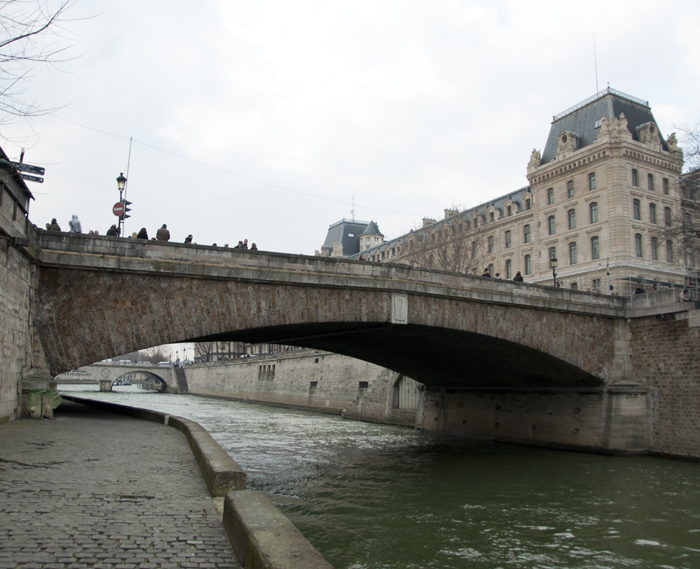
Bridge 17 – Pont Notre-Dame
While not the oldest bridge, the location hosted the first bridge in Paris—le Grande Pont which was destroyed during the Norman invasion of 886. Its current (metal) form was built in 1919 to replace the tight stone arches of its predecessor, nicknamed “Devil’s Bridge” by the boats attempting to pass underneath.
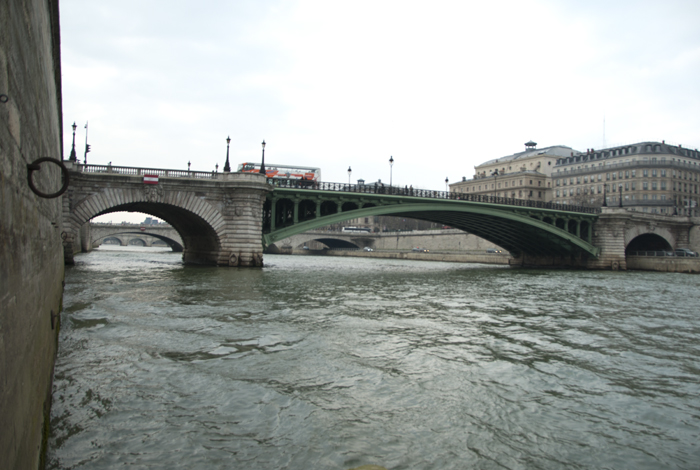
Bridge 18 – Pont Saint-Michel
The late 14th century saw the first bridge at this location. Common during the Medieval Period, houses lined both sides of the bridge, which may have contributed to its collapse during an especially extreme winter in 1408. The current bridge was built in 1857 and played host to many of the killings in the Paris Massacre of 1961, where numerous Algerians were bound and thrown in to the Seine by the police.
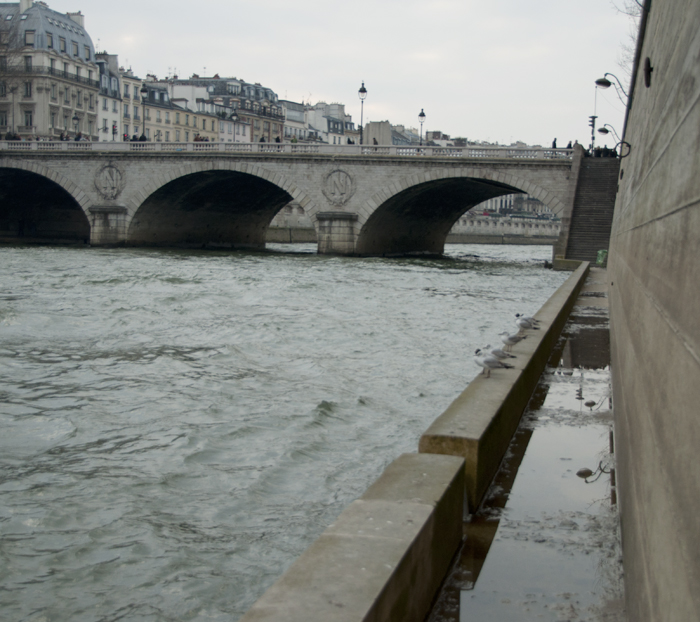
Bridge 19 – Pont au Change
Built in 1860, the Pont au Change was named after the money changers and goldsmiths that lined its predecessors during the 12th century.
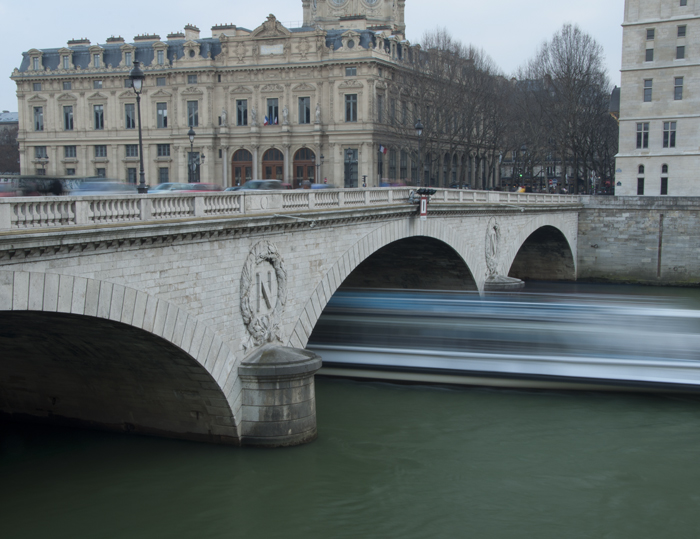
Bridge 20 – Pont Neuf
Inaugurated in 1607, le Pont Neuf—”new bridge”—is the oldest in Paris, an irony not lost on most guidebooks. Pont Neuf was the center of the city and the top tourist destination before the construction of the Eiffel Tower. Jugglers, musicians, and prostitutes vied for the attention of the public, much to the delight of numerous pickpockets.

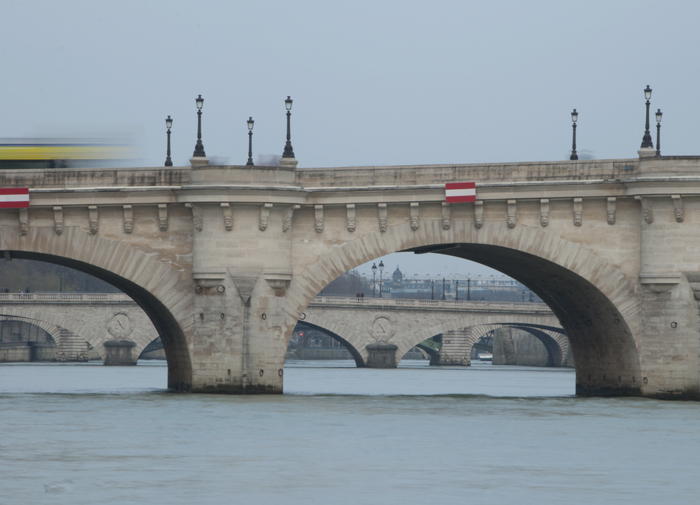
Bridge 21 – Passerelle des Arts
This site hosted the first metal bridge in Paris, completed in 1804 under Napoleon I. In the 1970’s, however, the bridge was decommissioned due to damage sustained from the heavy hand of boat traffic as well as bombers during both World War’s. The replacement bridge—a near identical copy to the original—was built in 1984. As a symbol of timeless love, tourists affix engraved padlocks and throw the key in to the river below; all locks were removed in 2010 but the tradition continues. Institut de France can be seen in the background where the Académie francaise—the official authority on the French language—is located; the Louvre is located immediately behind the photographer.
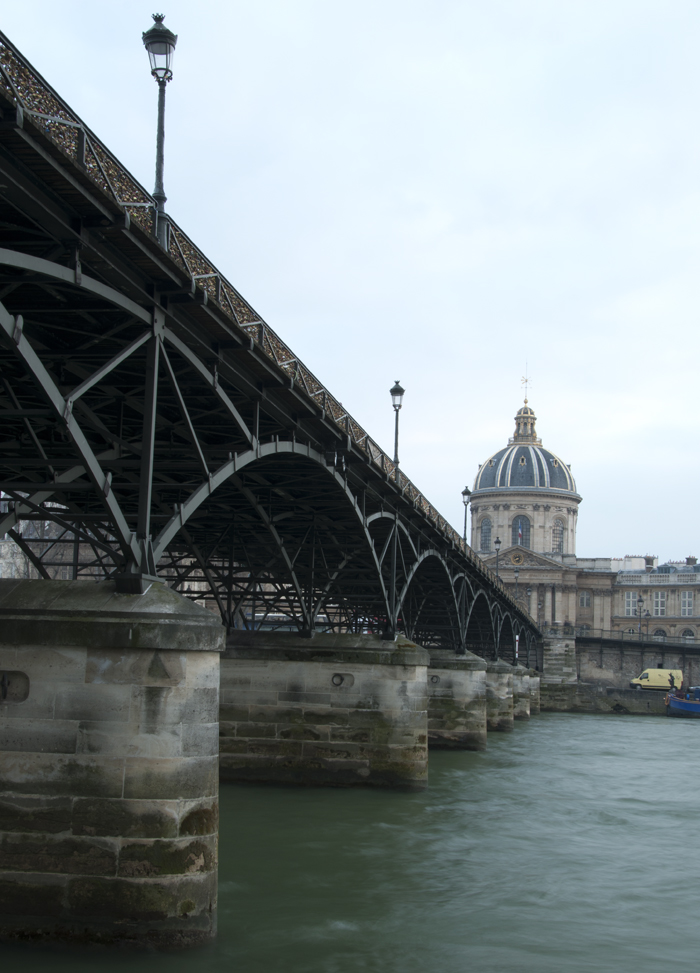
Bridge 22 – Pont du Carrousel
This present span was built in 1939 slightly downriver from its original location (circa 1831) to better line-up with Place du Carrousel, where the famous glass pyramid of the Louvre is located.

Bridge 23 – Pont Royal
Pont Royal is named as such because it was commissioned by Louis XIV in 1689, making it the third oldest bridge in Paris. It replaced a burned-down wooden toll bridge, which replaced a congested ferry service.
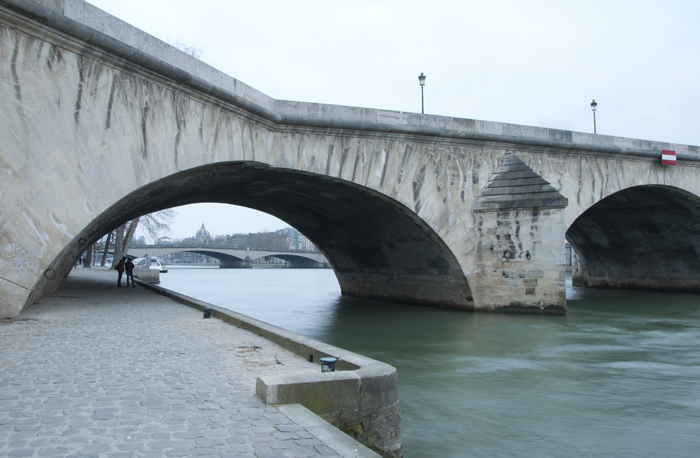
Bridge 24 – Passerelle Léopold-Sédar-Senghor
This passenger bridge—one of the newest in Paris—was constructed in 1999, though two different bridges have occupied this location since 1861. It is named after the first Senegalese president (1960-1980) who was also a poet and the first African member of the prestigious l’Académie française.
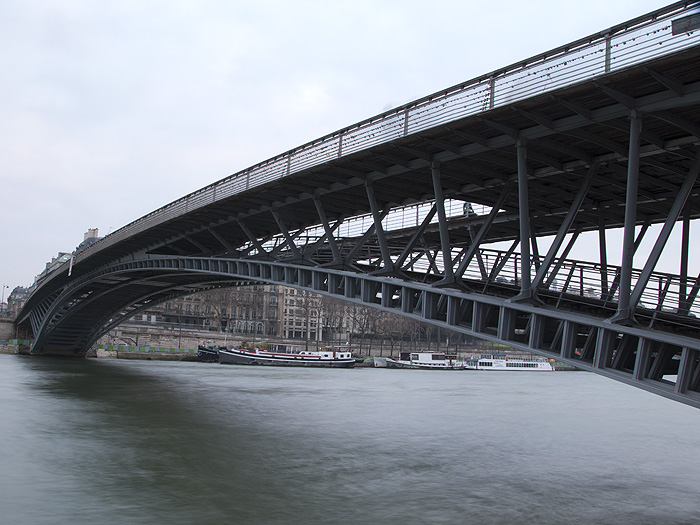
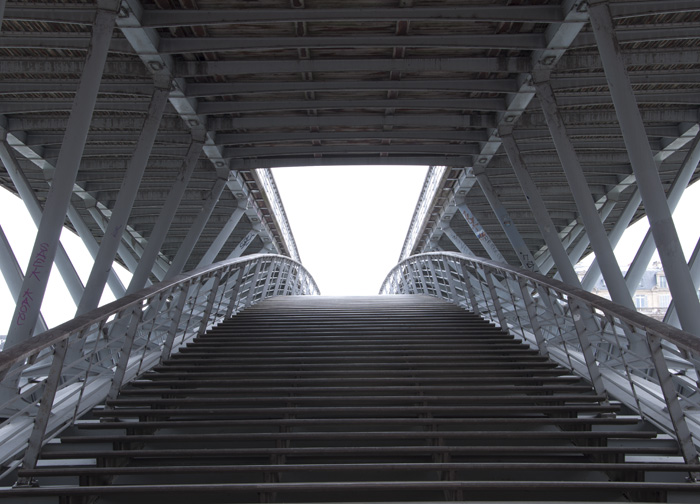
Bridge 25 – Pont de la Concorde
The bridge design was approved in 1787 and construction continued for several years, even through the social and political turmoil of 1789. In fact, stones used during construction were taken from the demolished Bastille prison, a symbol of French imperialism that was stormed by a crowd on July 14, 1789 to mark the beginning of the French Revolution. The name of this bridge followed the course of history: Louis XVI, Revolution, Concorde, Louis XVI for a second time, and, finally, Concorde again. It was widened to handle increased traffic in 1932.
The Assemblée Nationale on its southern side. Second image below is taken underneath the bridge, aiming through the arches across the Seine.
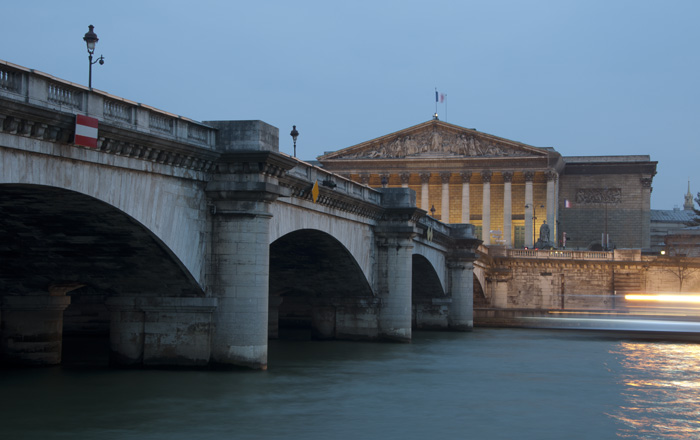
Bridge 26 – Pont Alexandre III
Inarguably the most ornate bridge in Paris, Pont Alexandre III was designed by Gustav Eiffel and completed in 1900. It connects the Grande Palais with Napoleon’s tomb at Invalides and was constructed as to not obstruct views of either.
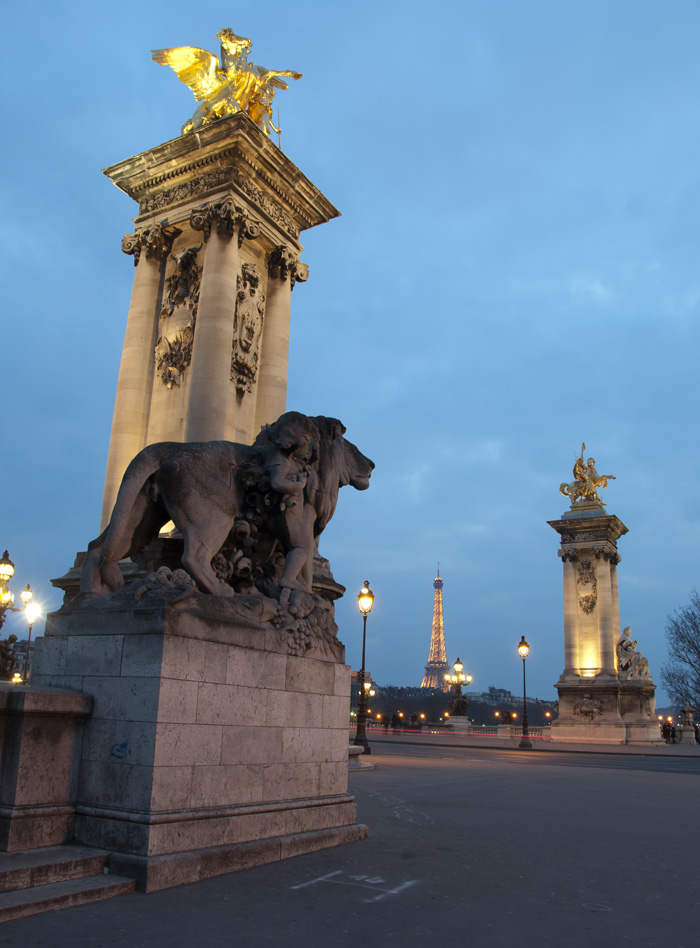
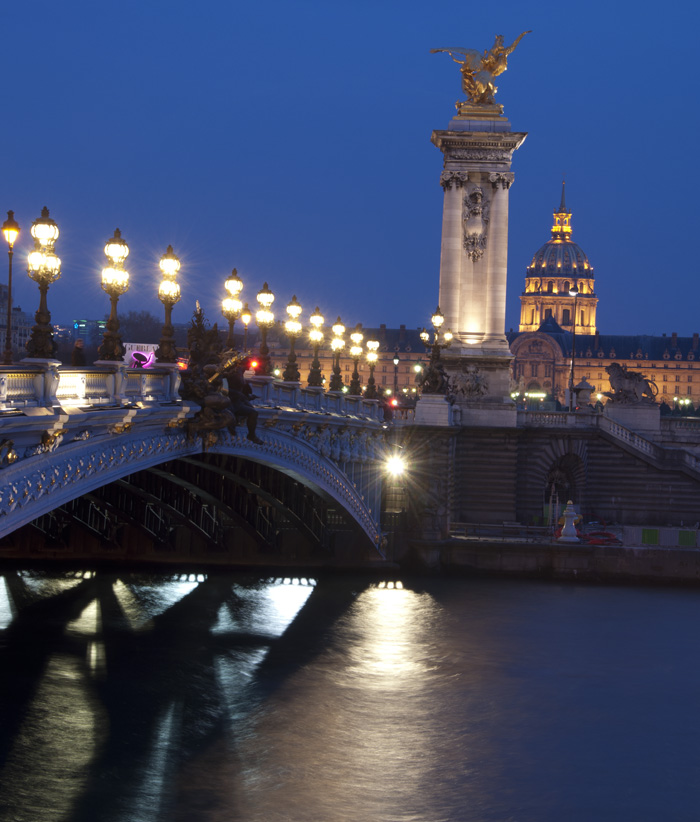
Bridge 27 – Pont des Invalides
A single span was originally planned in 1821 where Pont Alexandre III is currently located, but the suspended design required two large towers that obscured the view of Invalides. It was therefore moved downriver but the crumbling structure was demolished in preparation for the 1855 World Fair. The replacement bridge suffered some damage during the late 19th century but has required little maintenance since. The artwork signifies military victory on land (upriver) and at sea (downriver).
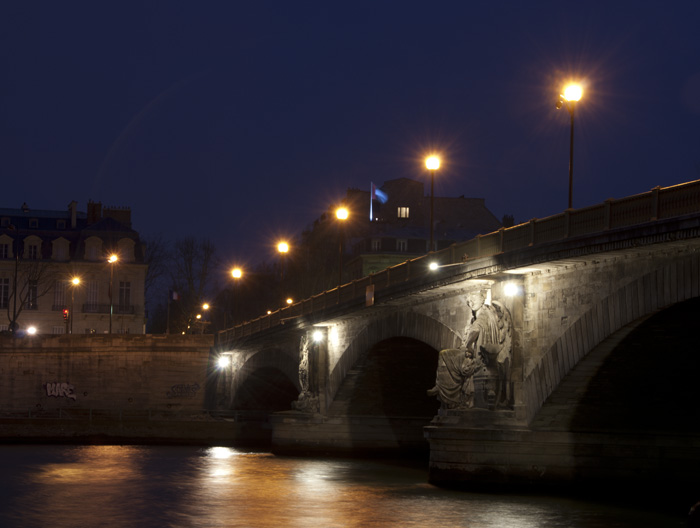
Bridge 28 – Pont de l’Alma
Completed in 1856, Pont de l’Alma (commemorating the first victory of the Crimean War a couple years prior) became more than just a bridge to Parisians. A famous statue (of a member of the French infantry) on the bridge became a gauge for water levels: when water reached his feet, the riverside walkway should be closed, whereas the river is deemed unnavigable when the water reaches his thighs. Amazingly, water reached his shoulders during the Great Flood of 1910, which caused over a billion dollars in damage.
This statue was retained when the bridge was rebuilt from scratch in 1974.
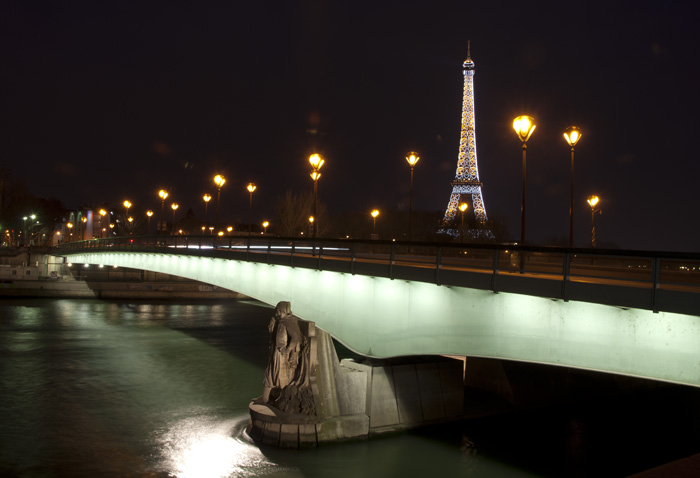
Bridge 29 – Passerelle Debilly
A passenger bridge that was moved to its current position after it was built for the 1900 World’s Fair. It is named after Jean Louis Debilly, an army general and recipient of the Commanders Cross of the Legion of Honor who died in battle in 1806. It is in the shadow of the Eiffel Tower.
Bridge 30 – Pont d’Iéna
The Eiffel Tower looms over Pont d’Iéna, but the bridge predates it by eighty years. Napoleon ordered its construction in 1807 and, unusual for the time, construction was funded entirely by the State. Napoleon’s First Republic fell in 1815, a year after the bridge was completed. Fortunately, the bridge was spared from the wrath of Prussian General Blücher who wanted to blow it up; the famous battle after which the bridge was named was where 28,000 Prussians lost their lives—10 times the French casualties.
The bridge was widened in 1937.

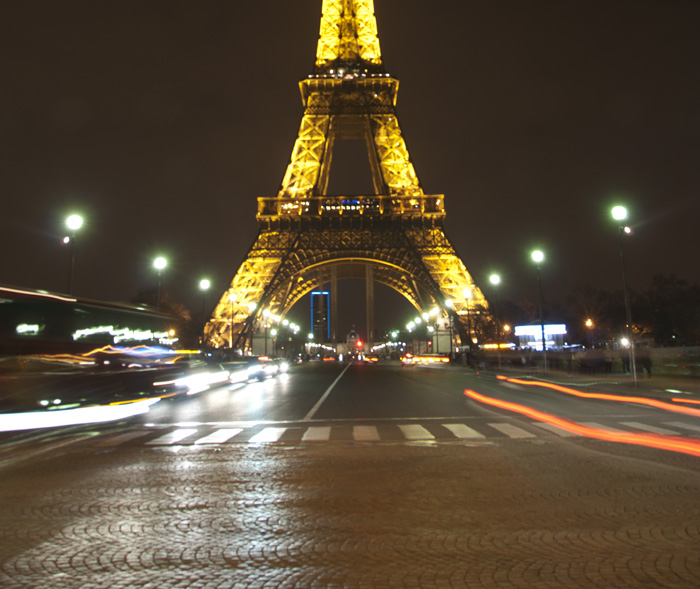
Bridge 31 – Pont de Bir-Hakeim
Made of steel, Pont de Bir-Hakeim was completed in 1905 to replace a structure built just twenty five years prior. It consists of two levels: one for cars and pedestrians, and another for the Line 6 metro. It was renamed in 1948 to commemorate the 1942 French victory over German forces in the Libyan desert.


Bridge 32 – Pont Rouelle
Built for the C line of the RER train, Pont Rouelle lays a nice sweeping arc across the Seine. I accessed the bridge by walking down Allée des Cygnes, a thin sliver of an island that extends under three different bridges, with Pont Rouelle in the middle. It was built in 1900, decommissioned in 1937, but then opened again (to trains) in 1988.
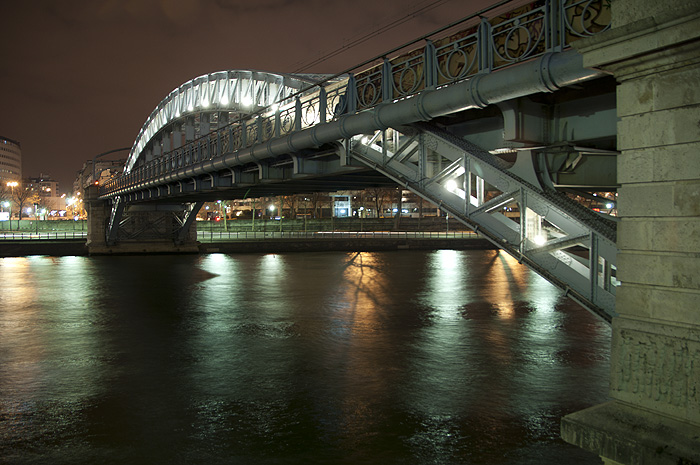
Bridge 33 – Pont de Grenelle
The current metal span was completed in 1968 but a couple other bridges have occupied this space since 1821. Pont de Grenelle is most famous for hosting a smaller replica of the Statue of Liberty, built in 1889 and the second of three found in Paris.
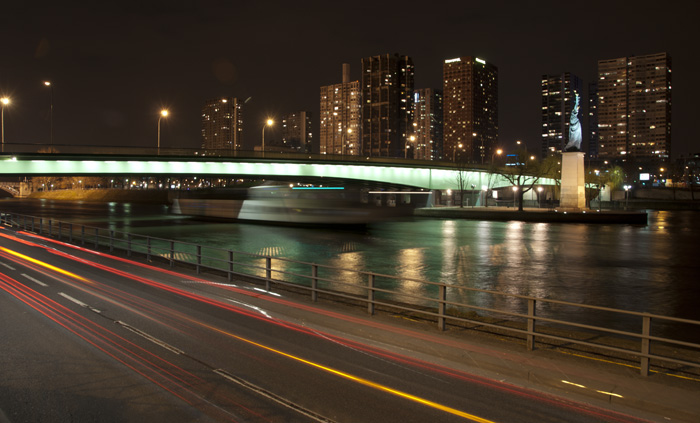
Bridge 34 – Pont Mirabeau
When completed in 1897—after four years of construction—Pont Mirabeau was the widest and tallest bridge in Paris. The two piles represent boats: one going upstream, the other downstream. Each boat contains a statue in both the bow and stern. The first image below captures “Navigation” (foreground) and “Abundance” (background). The second image shows “The City of Paris” on the Right Bank side of the bridge, downriver.
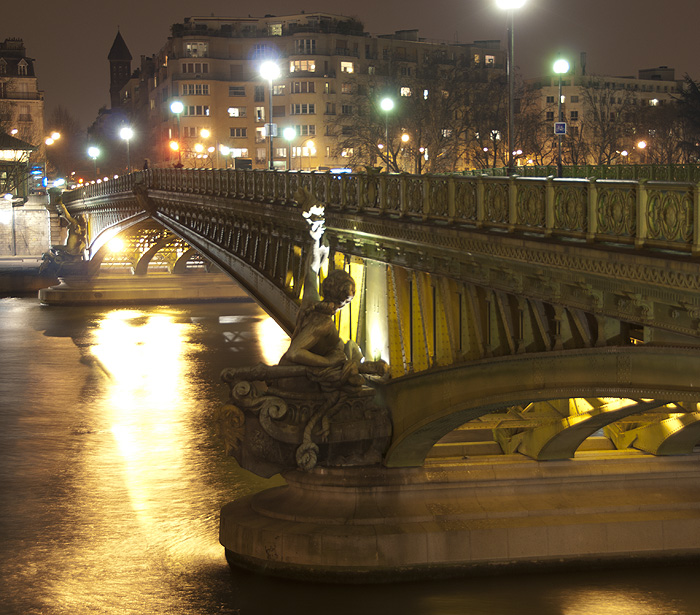
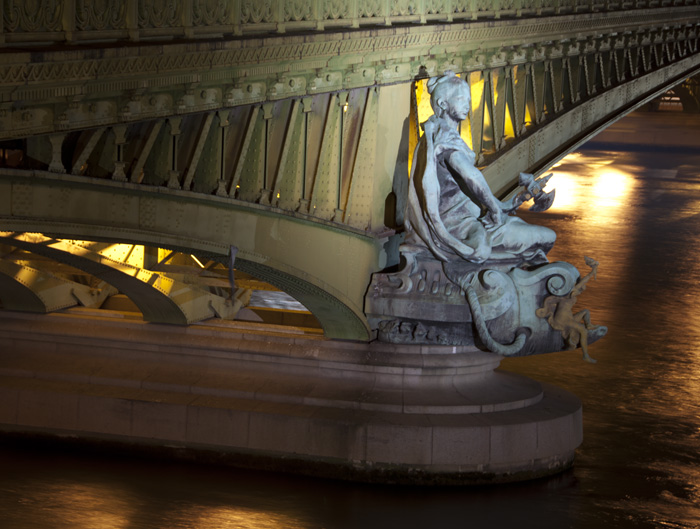
Bridge 35 -Pont du Garigliano
Named after a French victory in Italy in 1944, Pont du Garigliano was completed in 1966 and is Paris’ tallest bridge.
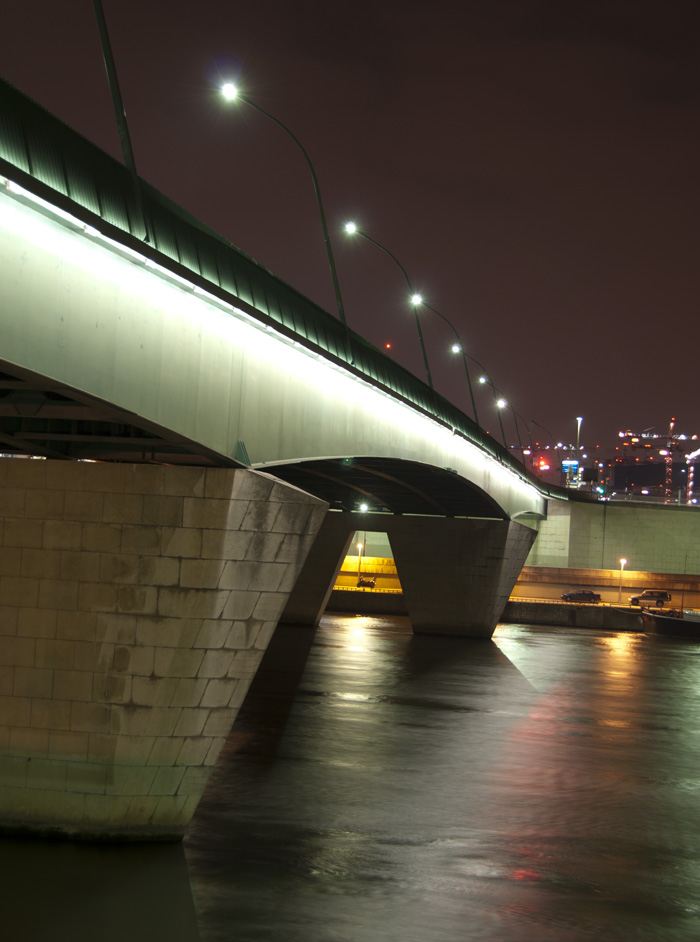
By the time I took this picture, it was 10:45pm. Several smashed out car windows were telling me it was time to go home. It’d taken me nearly six hours to walk nine miles along the Seine. On my memory card lay 557 images of 35 bridges.
Resources:
- en.wikipedia.org/wiki/List_of_bridges_in_Paris
- Bridges of Paris (www.paris.fr)
Birding By Ear: Urban Birds of Europe
There you are: jet-lagged and in a park near your hotel, before dawn, binoculars in hand. It’s the beginning of your European vacation and your family is still passed out upstairs.
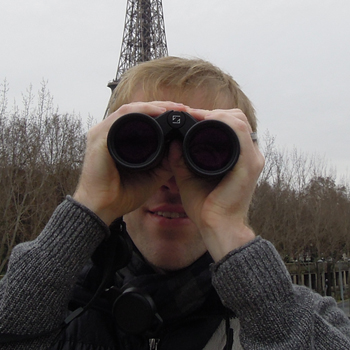
How nice of you to let them sleep.
As the morning begins to brighten in Paris (or maybe London, or Berlin) an unfamiliar dawn chorus begins to emerge from the greenery around you.
Maybe you studied your European field guide a little on the flight over but, as you know, every bird in the world has an unique vocalization and knowing that Common Chiffchaff and Willow Warbler are differentiated by leg color is of little use to you now, in this dim light.
Are you new to “birding by ear”? No worries, it’s never been easier.
Using reference CD’s and MP3’s from websites like Xeno-canto.org, create a playlist of the most common birds in your area. Play it on your commute to work, at your computer, or at the gym, until the songs become familiar to your ears. Now, when you next encounter the dawn chorus in full force, you can mentally sort the sounds you recognize, and focus on the ones you don’t. Chase down a couple new sounds and, once you visually identify the species, add them to your playlist.
You are now developing a mental reference library for bird sounds, and you might be surprised at how quickly new sounds will “catch.” You’ll remember new sounds by comparing them against the catalog you’re building. For example, you’ll note that the song of Purple Finch has the same liquid-like quality of a House Finch but it sings shorter, distinct phrases and lacks the upslurred end that House Finches often broadcast.
“Well, that’s helpful and all,” you interrupt, “but I’m still in Europe and I have no idea what I’m hearing.”
Don’t worry—this technique can still help elsewhere in the world. I’ve compiled a short reference of most common urban birds in Europe to help you prepare for your European vacation. Have a listen: some may sound quite similar to common birds back home.
Common Blackbird
May remind you of: American Robin
Blackbirds don’t have “yellow heads” or “red wings” in Europe, in fact this plain black bird with a yellow bill is in the same genus as the American Robin: Turdus. Appropriately, most of its vocalizations, from song to alarm call, are reminiscent of the vociferous songster you likely have in your backyard, albeit a bit more languorous, inebriated even.
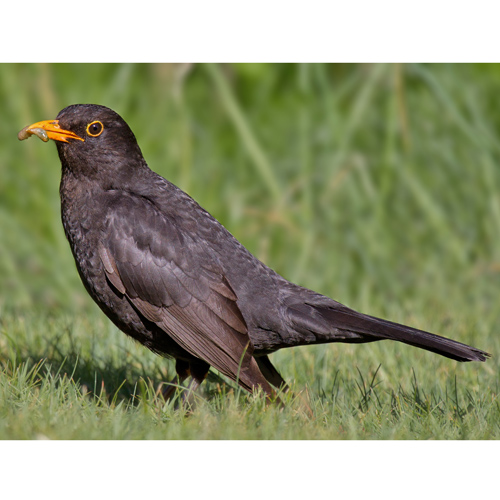
© Andreas Trepte |
Song Thrush
May remind you of: Northern Mockingbird
Another member of the turdus genus, the Song Thrush more closely resembles our own Swainson’s or Hermit Thrush. But once it opens its beak, expect a song similar to a Northern Mockingbird: short, distinct, discordant phrases repeated in two’s and three’s.
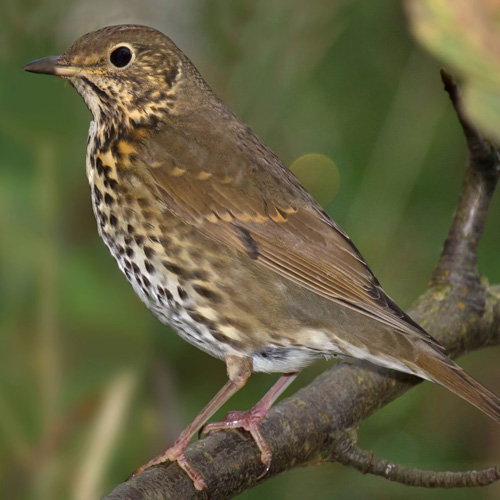
© Andreas Trepte |
Eurasian Wren
May remind you of: Winter/Pacific Wren
Hear a sweet, frantic song similar to your Winter Wrens back home? Well, up until 2010, it was the same species. But the wren you hear now—the Eurasian Wren—is its own species, and the only wren found outside the Americas.

© Andreas Trepte |
Common Chaffinch
May remind you of: House Finch
This boisterous singer can be heard in green-spaces throughout urban Europe. The song is crisp, “chippy”, and descends in pitch, but not in strength. When I first arrived in Paris, I likened it to the song of a House Finch, a common urban vocalist in North America. Their call—a “pink-pink”—is also quite distinctive (the recording below features the song in the foreground, with the call in the background).
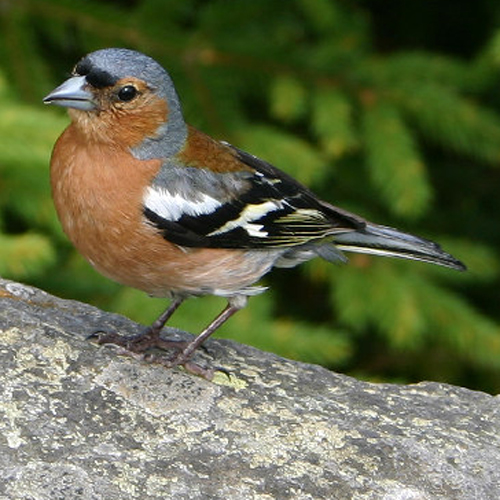
© Ian Cleland |
Goldcrest
May remind you of: Golden-crowned Kinglet
It sure looks like a Golden-crowned Kinglet (it’s in the same genus) and yup, it sounds like one, too. If you are near conifers and hear some small twittering coming from the canopy, you can bet it’ll be a flock of Goldcrests, a.k.a. the kinglets with goggles.
|
© Oiseauxvendee |
European Greenfinch
May remind you of: Pine Siskin
Hearing the slurred end notes that remind you of a Pine Siskin? Well, Pine Siskins go ↑UP↑ and the European Greenfinch goes ↓down↓. The song of the greenfinch is a bit “goldfinch-like” but they are often in large flocks so the down-slurred notes are easy to point out.
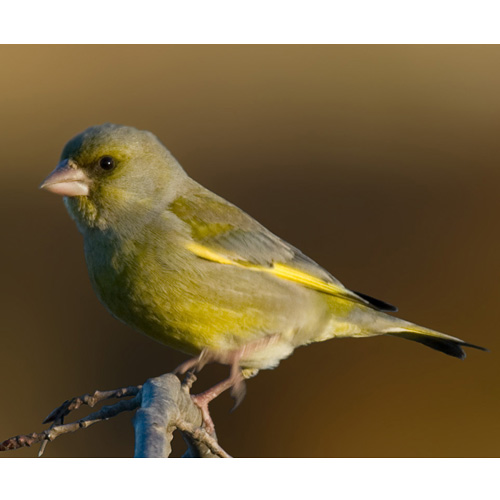
© Andreas Trepte |
Great Spotted Woodpecker
May remind you of: Downy Woodpecker
This common urban woodpecker has a call similar to the “pik” of a Downy Woodpecker, although much louder and more resonant. The Great Spotted Woodpecker, however, is closer in size to a Hairy. Green Woodpeckers—the second most commonly occurring urban “pecker”—has a boisterous, laughing call, so if you hear something that sounds like a woodpecker back home, it’s most likely a Great Spotted. Lesser Spotted Woodpecker is possible, but much less common: listen for a soft, descending whinny similar to a Downy.
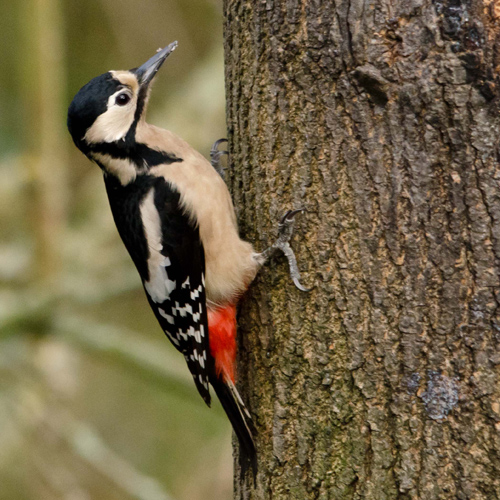
© Darrel Birkett |
Short-toed Treecreeper
May remind you of: Brown Creeper
The “creepers” of Europe maintain the same soft, fluting, liquid-like songs of the Brown Creeper back home. Are you in the U.K.? You’re hearing the long, descending song of a Eurasian Treecreeper. On mainland Europe, you can be hearing Eurasian or the more upbeat, ascending song of a Short-toed Treecreeper.
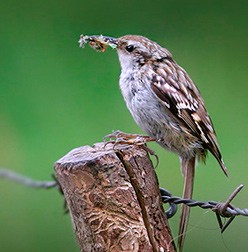
Short-toed Treecreeper © Jimfbleak |
Other Common European Birds
Common Chiffchaff
This widespread phylloscopus warbler has one of the most distinctive songs in Europe: a continuous string of single notes that quickly jump up and down the octave scale. If you watch any European programming that requires the use of bird sounds, you might find him there, too. A few of the audio samples highlighted on this page have Common Chiffchaff somewhere in the background as well.

© Hans Hillewaert |
Eurasian Blackcap
While a plain warbler in appearance, the Blackcap is anything but once it open its beak. Its beautiful song has the length and intricacy of a Winter Wren, the vocal variety of a European Starling, and the boldness of a Northern Mockingbird. Fortunately for visiting birders, they are vocal and widespread in spring and summer, and respond quickly to pishing.

© Jakub Stančo |
European Robin
The song of the European Robin is high and melodious one second, and wheezy the next. To me, it sounds like the male is struggling to get his song out as he inhales and exhales laboriously.
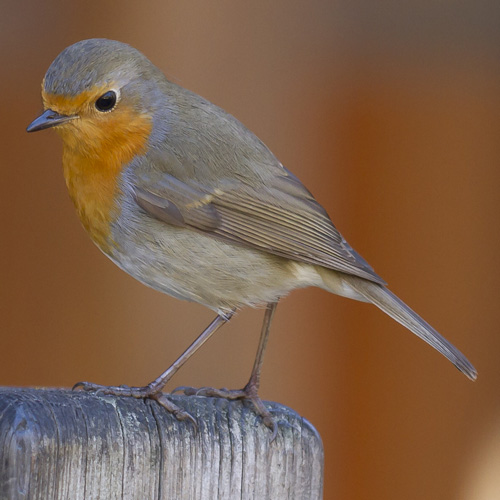
© Pierre-Selim Huard |
European Serin
This urban canary—literally, it’s in the same genus as the wild ancestor to the popular cage bird—doesn’t have the lyrical chops of its fellow Serinus. To me, its song is continuous, metallic chatter, similar in quality to an Anna’s Hummingbird. They are boisterous singers, though, which makes them easy to find. Don’t expect to find them in London, however, as this species is absent on the British Isles.
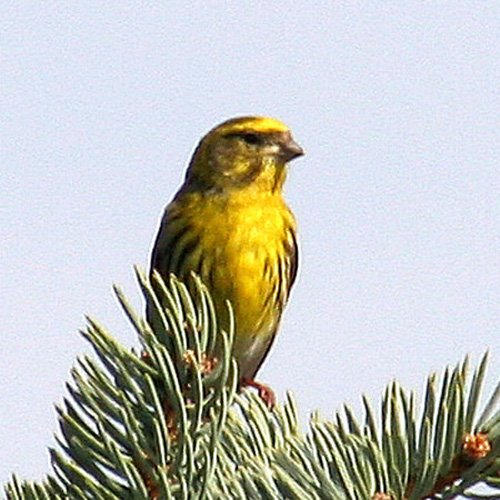
© Armin März |
European Goldfinch
The song of this handsome dandy is a continuous, and often quiet, string of trills and chatter, similar to that of the American Goldfinch. Also like its American counterpart, it’s most easily identified by its call, which it freely interjects into its song: an upslurred “te-LITT.”
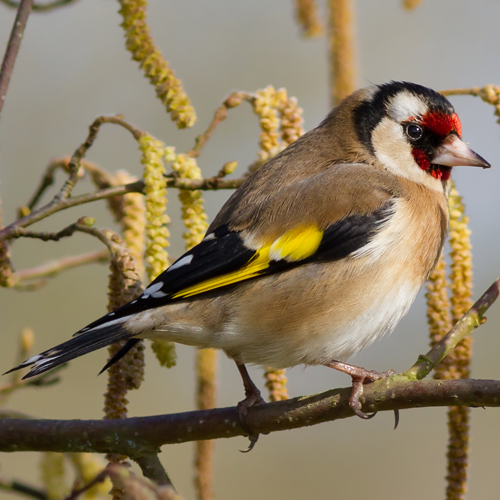
© Pierre Dalous |
Eurasian Nuthatch
The only audible similarity that this nuthatch shares with the Red-breasted in the States is how unique its call is in its respective habitat. To my ears, it sounds like a scolding water drop. And when it decides to call, it will do so quite adamantly, thus making them easy to locate.
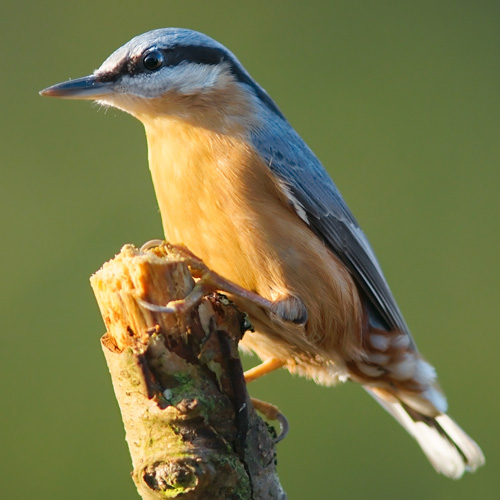
© Luc Viatour |
The Tits (A few of them at least)
Great Tit
The Great Tit has one of the richest vocabularies of any European bird—nearly 40 different call types at last tally—but considering it’s also one of the common urban species, if you hear a bird that you don’t recognize during your outing, chances are good that it’s a Great Tit. Song is usually a see-sawying, ringing, two syllable little diddy.
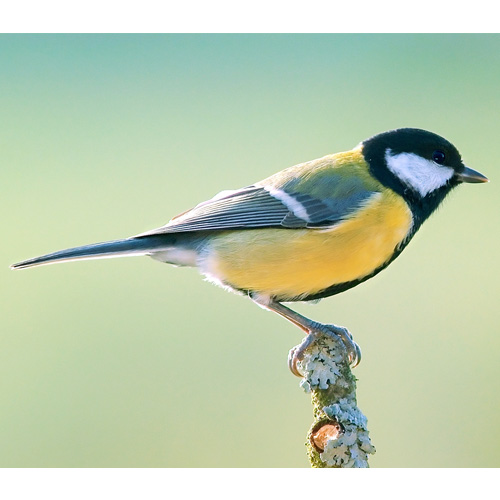
© Luc Viatour |
Eurasian Blue Tit
The second most common tit, if not the second most common species, the Eurasian Blue Tit has a four part song: “DEE-DEE-d-d-d-d-d-DEE-DEE-d-d-d.” The quality is higher and more piercing than that of the Great Tit. Start pishing at any urban green space and you’ll have the chance to hear its scolding call in person, after the Great Tits have come to investigate, of course.
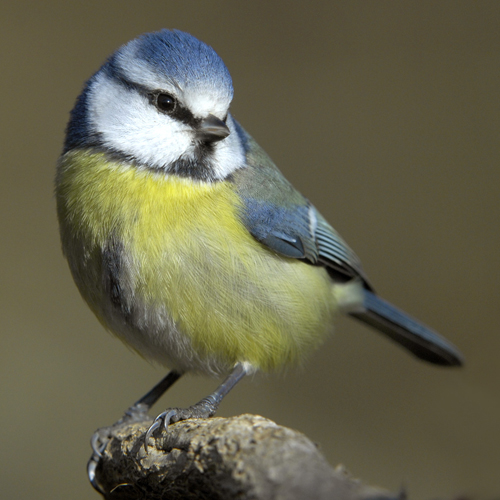
© Maximilian Dorsch |
Long-tailed Tit
Similar in proportion to Bushtits, though larger and more boldly colored, the Long-tailed Tit is readily identifiable by voice. Listen for the very quick, descending, scolding call and wait for the flock to pass through.
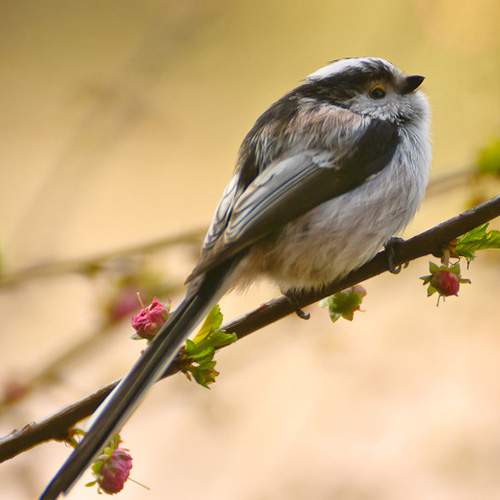
© Jos Dielis |
Marsh Tit
The Marsh Tit will most closely resemble North American chickadees of the tits mentioned here and I find, personally, that its call is one of the most distinct: a quick, ascending two-note “pi-CHAY.”
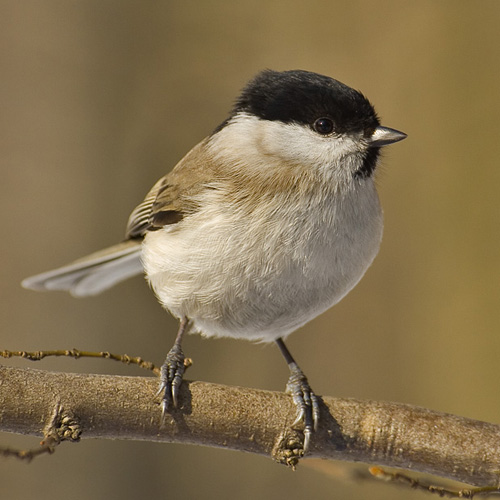
© Sławomir Staszczuk |
Already mastered these species or have a specific target bird you are looking for? Use Xeno-canto.org to find crowd-sourced recordings that you can download to your computer.
Wild Goose Chase
Yeah, it’s cliché, and I am certainly not the first birdwatcher to use, or perhaps abuse, this phrase. But when one travels to The Netherlands in winter to look for geese—totaling nine commonly occurring species—“Wild Goose Chase” suddenly seems awfully appropriate.
I’d learned of the bounty of Branta when my wife and I relocated to Paris in 2012 and I began to research what European birds were found where, and when. The Netherlands in winter quickly fell on my radar because several goose species that show up rarely in North America, like Pink-footed, Barnacle, Graylag, and Tundra Bean, occur commonly in this low lying country, sometimes in flocks of 10’s of thousands. Greater White-fronted Geese are found on both continents, but it’s diminutive cousin, the cleverly named Lesser White-fronted, is much more scarce and found few other places on earth. Brant occur on both continents as well, but Dutch population is the bernicla subspecies that breeds in Russia. The widely distributed Canada Goose and Egyptian Goose, both established species from exotic origins, round out the nine commonly occurring species. Throw in a rare species like Red-breasted, Taiga Bean, Ross’s, or Snow and you have the potential of a double-digit goose count in a single day.
Of course, you have to care about geese, and Steven, a Dutch gentleman I met through BirdingPal, was a bit surprised about my obsession. Nevertheless, he was excited to help an American birdwatcher find some new birds and we scheduled a full day of goose chasing on March 8 to coincide with Kristi’s work trip to Amsterdam.
For several weeks prior to this trip, I checked the Dutch reporting website, www.waarneming.nl (Dutch version of eBird.org) routinely for updates on rarities. Rare birds in the Netherlands can stray from North America, Africa, or Siberia but if they do stray, you can almost guarantee they’ll be found, and then subsequently seen by hundreds of Dutch birders within hours. Steven estimated that there are 400-500 expert birders in the Netherlands, i.e. people who can readily identify any bird that occurs in Europe—no matter the age or sex—by sight or sound. Another 10,000-15,000 people care enough about birding to contribute data to waarneming.nl (waarneming means “sighting”). Considering that The Netherlands is the same size as Greater Los Angeles, you can safely assume that every bird that penetrates Dutch borders will be scrutinized by this cadre of birdwatchers, and likely on a daily basis.
In the weeks leading up to my trip, I checked this site routinely. A couple Red-breasted Geese, a flamboyantly colored diminutive goose that breeds in northern Russia and winters near Turkey, were seen in flocks of Barnacle Goose. This is a bird that frequents waterfowl collections in North America, and one I had wanted to see since childhood.
But then something awful occurred during the week leading up to my trip: the weather began to improve.
Bright sun and clear skies clearly signaled that winter was coming to a close. There was jubilance across Paris as warm temps improved spirits, but I was nervous; I feared that the geese may be getting itchy to start their northward migration.
A couple days before my trip, an email from Steven confirmed my fears: the Pink-footed Geese were already gone and the Tundra Bean Geese were beginning to follow suit.
Crap. “The Lesser White-fronts are still around,” Steven wrote, sensing that my mood would need to be lightened. As scarce as they are—and declining—it would indeed be a highlight of my trip. “At the very least, we can just go birding.”
Very true.
At 7:00AM on the 8th, he pulled up in front of our hotel in Amsterdam. I shook his hand, gave him a coffee, and we were on the road, heading north.
For 20 minutes, we drove around the nearby town of Heiloo (“HIGH-low”) to look for a second winter Iceland Gull that was spending the winter in a small canal in the middle of a suburban cul-de-sac. Unfortunately, the man who had been feeding the gulls hadn’t yet put any bread out and only a handful of Black-headed and Herring Gulls were frequenting the neighborhood. I hadn’t seen a single goose yet, so I was getting anxious.


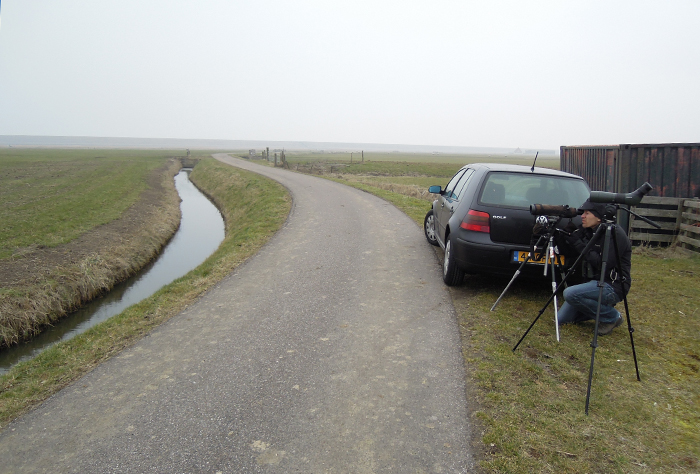 Our next stop was further north to Camperduin (“CAN-per-dine”) to drive the narrow roads through agricultural fields interspersed with small homesteads and iconic windmills. Within minutes, we rolled past a small flock of Graylag Geese (#1) that cradled a pair of Greater White-fronted Geese (#2). We continued a couple hundred meters and found a much larger flock of Greater White-fronts. After scanning with binoculars, we realized that the flock was intermixed with some smaller geese. We quietly got out of the car and set up our spotting scopes to find the shorter bills, steeper foreheads, and distinct eye-rings of Lesser White-fronted Geese (#3). In the immediate area, we tallied 38 of this vulnerable species which has a global population of about 30,000. They had thankfully waited for me, or at least had avoided taking off in the thick clouds that hung low in the sky. While only numbering a few hundred birds, this flock also produced a small number of Barnacle Geese (#4), a few Brant (#5), and a distant pair of Egyptian Geese (#6). Meadow Pipits were doing their flight displays despite the subzero wind, which drove Steven and I back into the car.
Our next stop was further north to Camperduin (“CAN-per-dine”) to drive the narrow roads through agricultural fields interspersed with small homesteads and iconic windmills. Within minutes, we rolled past a small flock of Graylag Geese (#1) that cradled a pair of Greater White-fronted Geese (#2). We continued a couple hundred meters and found a much larger flock of Greater White-fronts. After scanning with binoculars, we realized that the flock was intermixed with some smaller geese. We quietly got out of the car and set up our spotting scopes to find the shorter bills, steeper foreheads, and distinct eye-rings of Lesser White-fronted Geese (#3). In the immediate area, we tallied 38 of this vulnerable species which has a global population of about 30,000. They had thankfully waited for me, or at least had avoided taking off in the thick clouds that hung low in the sky. While only numbering a few hundred birds, this flock also produced a small number of Barnacle Geese (#4), a few Brant (#5), and a distant pair of Egyptian Geese (#6). Meadow Pipits were doing their flight displays despite the subzero wind, which drove Steven and I back into the car.
We continued to explore this expanse of flat agricultural fields where we found several large flocks of Barnacle Geese, a favorite hiding place for Red-breasted Goose. We scanned each flock for the black back and distinctively colored head and neck of this rare visitor, but we came up empty. Out of 100,000 Barnacle Geese, 1 or maybe two Red-breasted Geese will be found: odds certainly not in our favor.
“Have you seen ‘Pied Wagtail’?” Steven asked me, referring to a black-backed form of the normally gray-backed White Wagtail which breeds in Great Britain but migrates through mainland Europe. Some authorities consider it a separate species.
“No, I don’t think so.”
Within minutes, we were driving a small country road next to a wetland in Abbestede (“A-buh-stay-duh”). As if on cue, three wagtails fell from the sky, including two adults: one with a gray back, the other black. Check.
Back on the road, I confided that I had never seen a Common Eider, an Arctic seaduck composed of white, diffused pastels, and long-sloping forehead. “Easy, we’ll be driving by a beach where a couple were recently reported,” Steve responded, checking his phone.
We were soon pulling in to the parking lot of Falga (“Fall-Hah”) surrounding by coastal conifer trees. We walked over sweeping coastal dunes for ten minutes before arriving at the beachside restaurant and expansive sandy beaches; the boarded up windows and sand drifts hinted that this was the off-season. Two beautiful male Common Eiders were easily found just beyond the surf, providing easy scope studies of a bird I’d only seen in pictures since childhood. They are even more colorful in person; Steven laughed in disbelief every time I excitedly pointed out whenever one flew by. The rough surf also hosted several Razorbills—a relative of puffins that I’d never seen before—in both breeding and winter plumages, as well as Slavonian Grebe and Red-throated Diver (Horned Grebe and Red-throated Loon to North American birders), both of which were additions to my European list.

Our next stop was along a fortified shoreline a little further north on Den Helder Boulevard to look for Purple Sandpiper. A handful of Ruddy Turnstones, Red Knots, and Dunlin greeted us, but the real action was offshore where spring migration was just ramping up: flocks or European Wigeon, Northern Pintail, Northern Shoveler, Red-throated Loons, and various shorebirds, all flying north. I soon picked out my lifer Common Scoters (a species recently split from the Black Scoter in North America) and several Northern Gannets, a relative of boobies and another addition to my European list.
It was a short drive to Hippolytushoef (“HI-poh-li-tus-hoof”) to case the agricultural fields for a large wintering flock of Brant. We quickly found them, and the large roadside flock of sheep neighboring them quickly found us: the cacophonous greeting is not one I’ll soon forget.
Seeing such a large flock of brant—we counted over a thousand—was a new experience for me. The fact that they were foraging on grass was also new; Seattle birders are not used to seeing our local “Black” Brant far from beaches in Puget Sound where they are especially fond of eel grass, a type of seaweed. Steven and I sifted through the foraging flock of brant—the “Dark-bellied” bernicla subspecies that breeds in Russia—looking for the “Pale-bellies” of the hrota subspecies from Greenland. The first two were paired together and we soon picked out another six before we put the scopes back in the car.
My goose count stood at six, respectable in North America but lower than the total I’d expected today. We needed to continue our search.
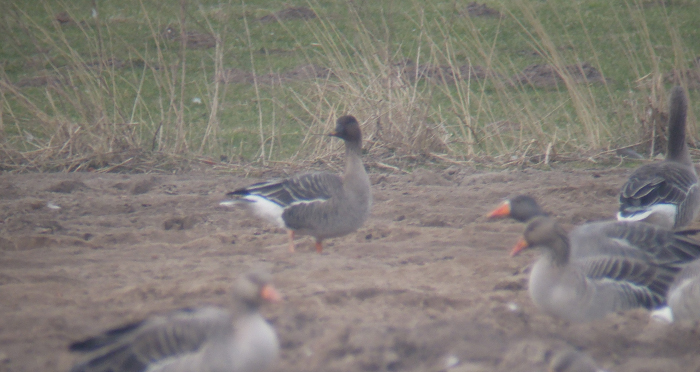
Thankfully Steve saw a distant, but promising, flock of Graylags. We drove slowly up to the piles of dirt and rotting carrots and Steve found the dark chocolate heads of #7: Tundra Bean-Goose. I fumbled to get a couple photos of this confiding lifer before we were on the highway south to Amsterdam.
Surely my number would still climb once we found a Canada Goose.
“What?” Steven replied, incredulous as to why I wanted to take valuable time to find a nuisance species. Although from exotic origins, like the Egyptian, it’s established in The Netherlands and “countable” in birder parlance.
Seconds later, we zoom past another flock of geese feeding on the side of the highway. Brown bodies, black necks, white cheek patch: Canada Geese. #8.
And we didn’t even need to slow down.
We chased the waning daylight to Waterland (“VA-ter-lund”), another vast agricultural area just east of Amsterdam. We stopped to scan the first flock of Barnacle Geese we found, numbering 20,000, hoping to find one Red-breasted. A resident stopped to talk to us, explaining that the government compensates farmers for any crop damage inflicted by the wintering hordes of roaming lawn-mowers.
After scanning five different flocks, I was feeling as if the tally would remain at eight. As twilight swallowed the day, we perched up on a dyke to scan a small, vegetated bay at the last flock of Barnacle Geese. Slowly, this evening roost of vociferous waterfowl continued to grow as V’s of geese returned from the fields behind us. Within 30 minutes, the chatter grew to a roar as the flock swelled to 50,000 birds. My search became futile. Finally, the light got too flat for me to tell the difference between white and red, so I had to give up my quest for a Red-breasted Goose.
Steven pointed out the elongated profiles and slender bills of two Caspian Gulls. Another lifer: a nice consolation.
You always have to save something for next time.
